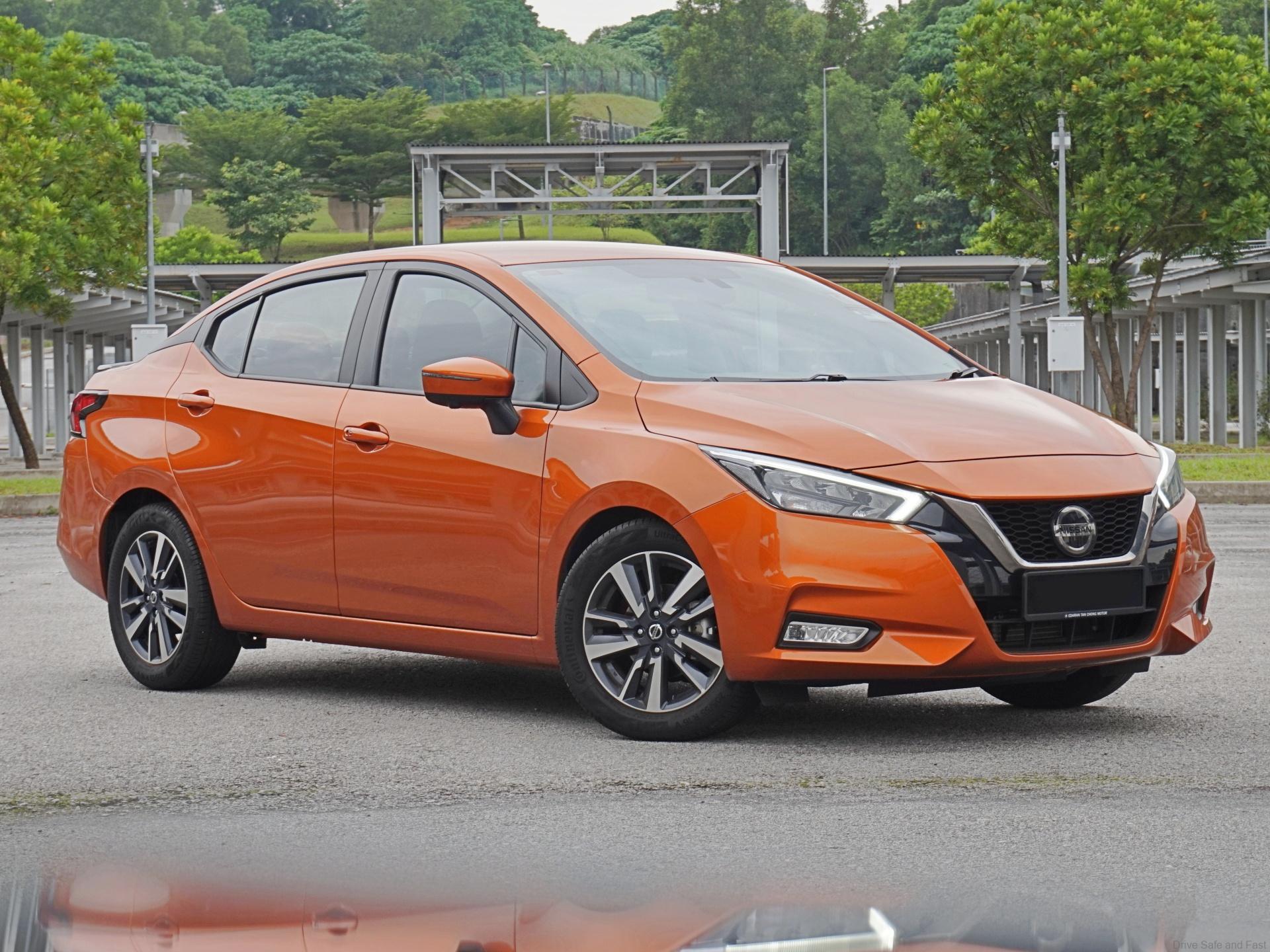A DSF.my reader shares a detailed owner’s review of the 2023 Nissan Almera VLT.
Words & Photos submitted by Nicholas Wong
When I picked up the keys to my brand-new Nissan Almera last year, it felt like the culmination of the long game I was playing that spanned literally years. At the height of the COVID-19 pandemic, I probably spent an unreasonable amount of time contemplating what I wanted my next car to be, with a very specific set of criteria. In Malaysia, it took 3 years for the N18-generation Nissan Almera to be updated enough to tick all the right boxes, but when it finally did, I sprung for it. The Almera is the decidedly left-field choice in the B-segment, being the only one amongst its peers here packing a tiny, turbocharged 3-cylinder, 1 litre engine as opposed to a conventional normally aspirated 1.5L 4-cylinder mill. Sold as the Versa in the Americas with a different powertrain setup, the N18 Nissan Almera is developed as a global model – and in many ways, it shows. With sharp, grown-up looks much evolved from its preceding generation and an extensive list of kit, the car isn’t just an underrepresented and probably underappreciated gem in an otherwise relatively pedestrian segment – it also carries the burden of public sentiment towards local distributor Edaran Tan Chong Motor and the unpleasant legacy of the Almera nameplate.
The long road to the B-segment underdog
The extended lockdowns in 2020 blessed me with plenty of time for planning, but very little action. Due to space requirements, I had decided my next car had to be at least a B-segment sedan. Coming from a local car, I had also grown tired of the time-starved, high churn nature of aftersales service that tends to come with high volume brands – so it had to be from a non-national marque. It also needed to come with Android Auto, because I’ll probably never own an Apple product (by choice, mind you). Finally, it needed to pack forced induction under the hood – it was something I wanted in a car I could call my own before electrification finally takes over the motoring world.
When the N18-generation Nissan Almera was finally unveiled in Malaysia back in 2020, I was intrigued. I’ve always liked the idea of a downsized engine paired with a low pressure turbo – the concept wasn’t exactly new considering it’s been making its rounds across Japan and Europe for many years now, but it sure took its sweet time coming into mainstream status here (I’m looking at you, VW Polo TSI and Ford Fiesta EcoBoost – tragically short-lived as they were). This Almera ticked most of the boxes, but with one jarring omission – Android Auto support (in an Android-dominated market, no less). Automotive journalists at the time who interviewed ETCM found the reason was that the head unit was brought in directly from Japan and Android Auto technically wasn’t officially supported in our region. That didn’t seem to stop its competitors or even other models in Nissan’s portfolio – so I waited.
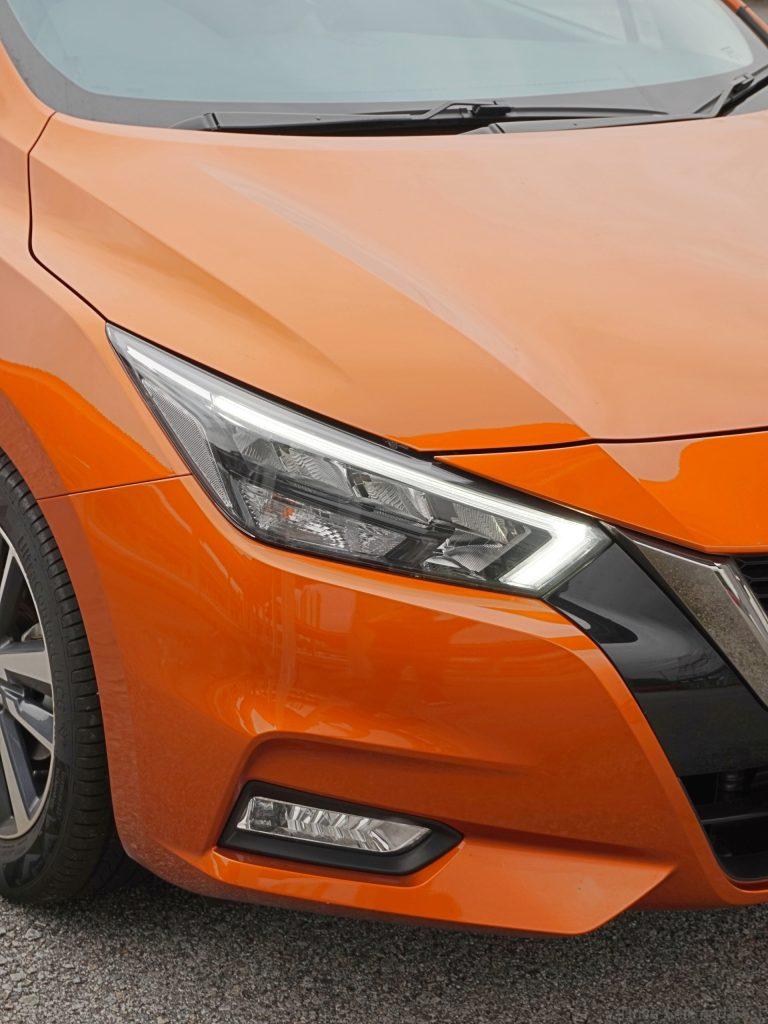
A couple years later, our Thai neighbours received the news that their Almeras would now come with Android Auto – which was when I knew it was only a matter of time. In August 2023, ETCM quietly rolled out Android Auto in all new Almeras – to little fanfare and even less attention from the automotive press. This bothered me a little – it seemed that the marketing and PR pushes for the Nissan Almera seemed to focus more on superficial additions like the Tomei body kit or (more recently, at the time of writing) the Kuro Edition (admittedly that’s a beautiful coat of paint), while more practical features fly under the radar. Call me a wet blanket, but I think the Almera looks good enough stock without these kits and I doubt they’ve been wind tunnel-tested to prove any meaningful contribution to aerodynamics or downforce, so they’re just dead weights to me. That’s just my opinion, though – perhaps some market research was done and they found that their target buyer was the boy racer/ricer types who enjoyed this sort of thing.
Regardless, my checklist was complete – in September of 2023, I left the showroom with a new Nissan Almera fully kitted out in the highest VLT trim. Sure, I could’ve played it safe and joined the sea of Toyotas and Hondas – the Vios (including the previous generation at the time) and the City are perfectly decent cars, but they couldn’t scratch that forced induction itch. Or I could’ve gone with the Proton X50, but the crossover body style and head unit software didn’t sit well with me. The recently launched (at the time of writing) Proton S70 is also a strong contender for similar money, but the reality is that our contentious tax system means local brands will always have the upper hand when it comes to value. Alternatively, I could just have thrown more money at the decision and looked for something in the C-segment. In the end, I chose the N18 Almera because, after years of left-brained decisions and playing it safe, I had come to a point where I allowed myself to listen to my heart more – without spending too much money with its sub-RM100k price tag. There was just something about the car’s position in the market that spoke to the rebel in me that was also priced in a way that allowed my mental gymnastics to overcome my general aversion to spending too much on a car-cum-depreciating asset. It’s also nice to be able to get behind the wheel of something I enjoyed looking at – that striking shade of Monarch Orange certainly helps.
Exterior: The orange of my eye
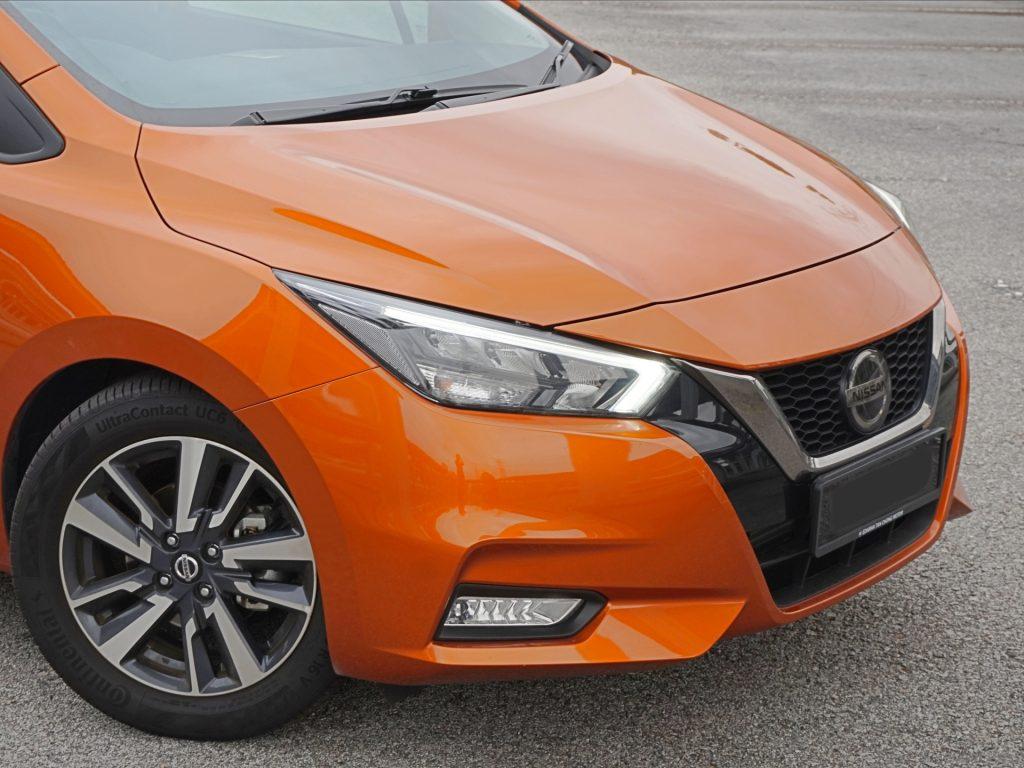
You’ve heard it all before – the current-generation Almera is a massive generational leap over the ugly duckling before it. This wasn’t just in terms of aesthetics, but it’s a good place to start.
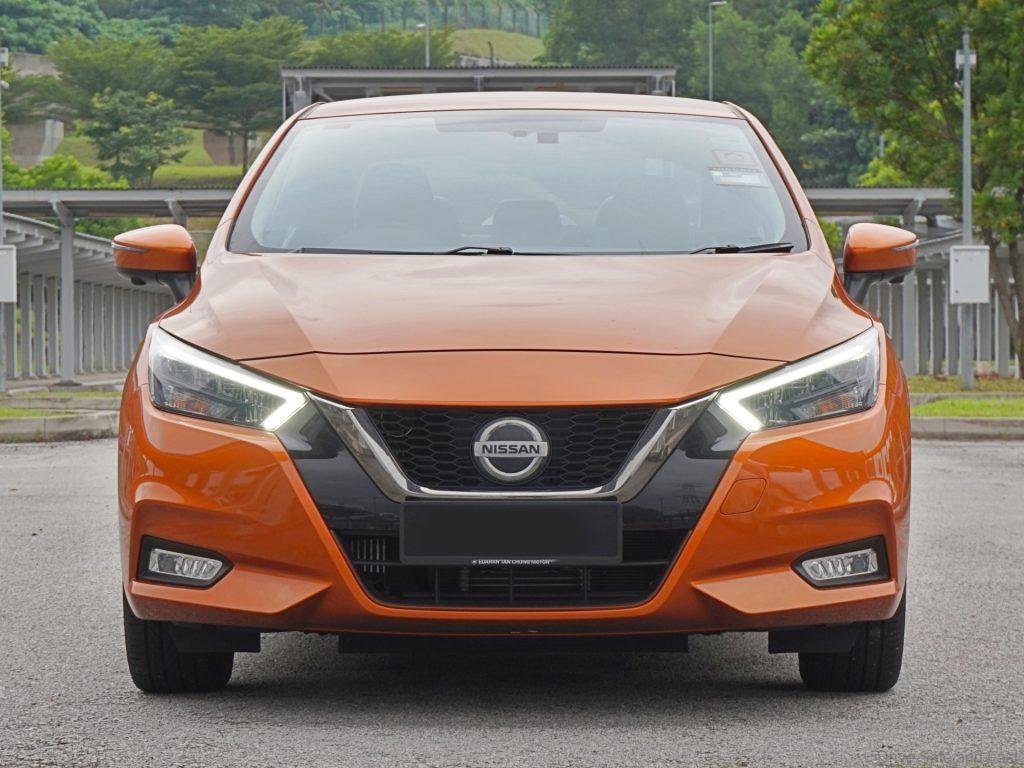
Up front, slanted headlights with boomerang-shaped daytime running lights flanking Nissan’s signature Vmotion grille make up a pretty sharp front end. In the VLT trim, lights are LEDs all around, including the fog lamps and signal lights. The Nissan logo gracing the front hadn’t been updated with the new one yet in the outgoing Almera, but here it sits behind a clear disc hiding some sensors used by its active safety systems. Character lines along the sides flow into the back, connecting to the upper tips of its boomerang-shaped taillights. Sensing a theme here? The side mirrors also feature a noticeable little bulge underneath each to house the cameras and sensors for some active safety tech that I’ll cover later.
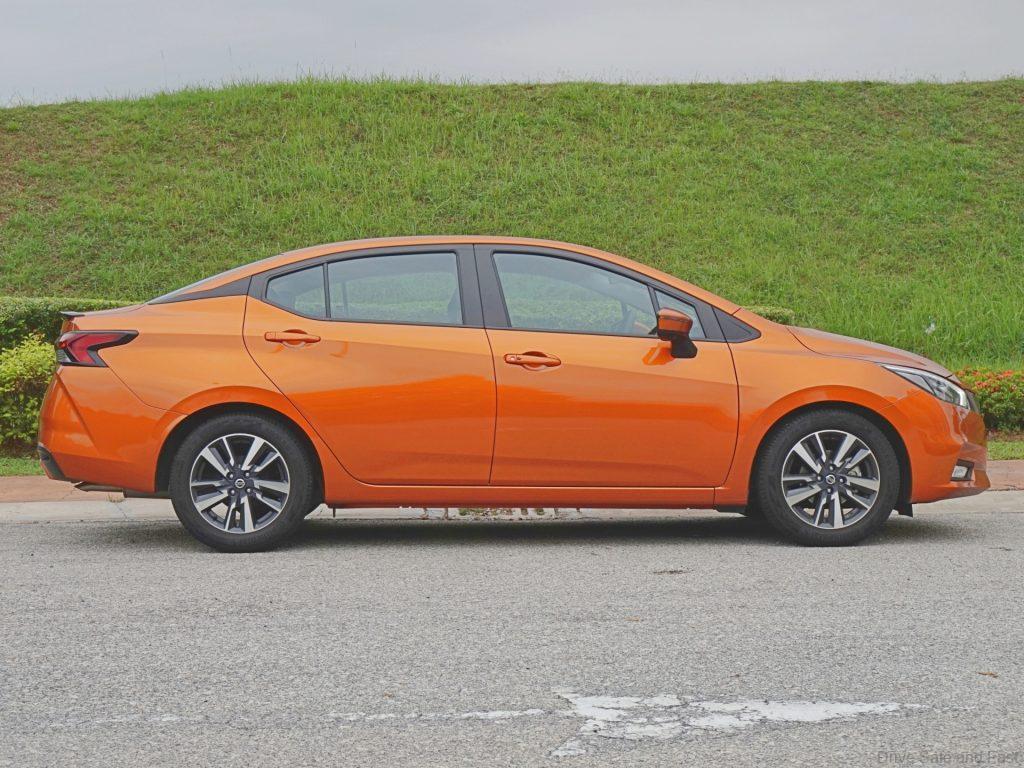
The car looks a little long for a B-segment sedan – its length of almost 4.5m pushes it towards C-segment territory, but this has certainly helped with its proportions, because its side profile looks more akin to a traditional 3-box sedan than its competition. It all looks quite cohesive and decently athletic (within the segment, anyway). Rims are some pretty nice dual-tone 16-inch alloys that are pretty standard in this segment.
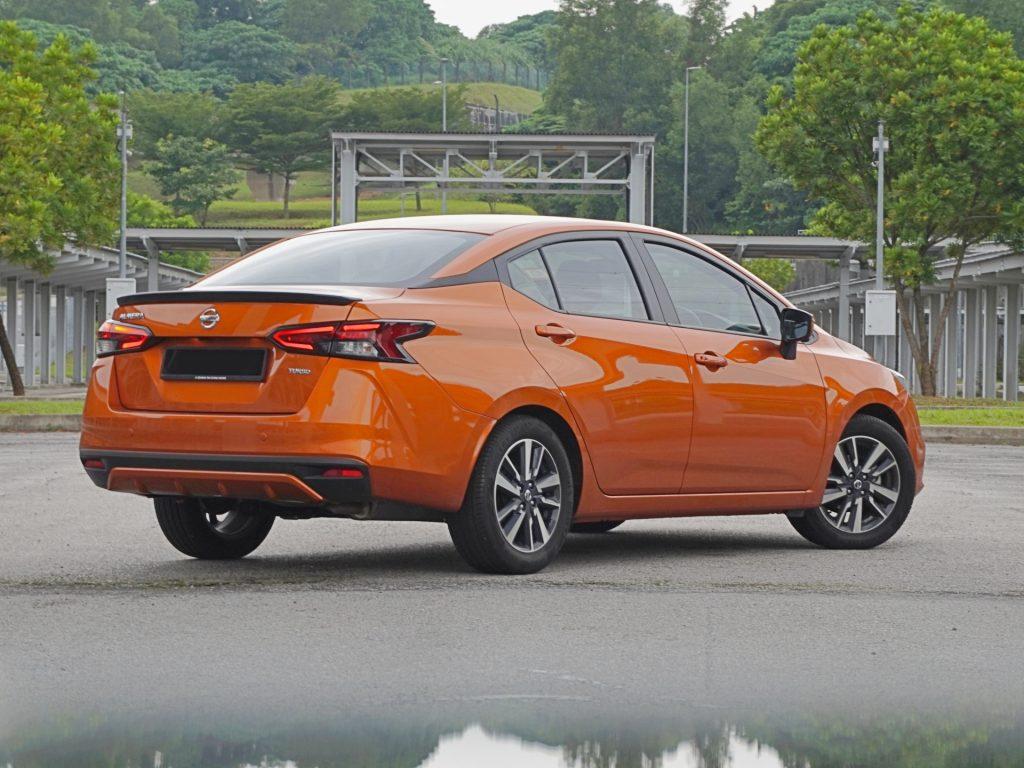
In the rear, a blacked-out strip of the C-pillars give it that floating roof design that seems to be the trend these days – it certainly helps break up the visual mass and prevents the rear from looking too bulbous, which seems to be a common issue with B-segment proportions. It’s only a shame that these C-pillar strips feel a little plasticky and come in matte black – a glossy finish would’ve been nice to match the gloss black trim in the front flanking the grille and the bootlid spoiler. Unfortunately for lower trim levels, the bootlid spoiler only comes with the top VLT variant – I think the rear looks awkward without it.
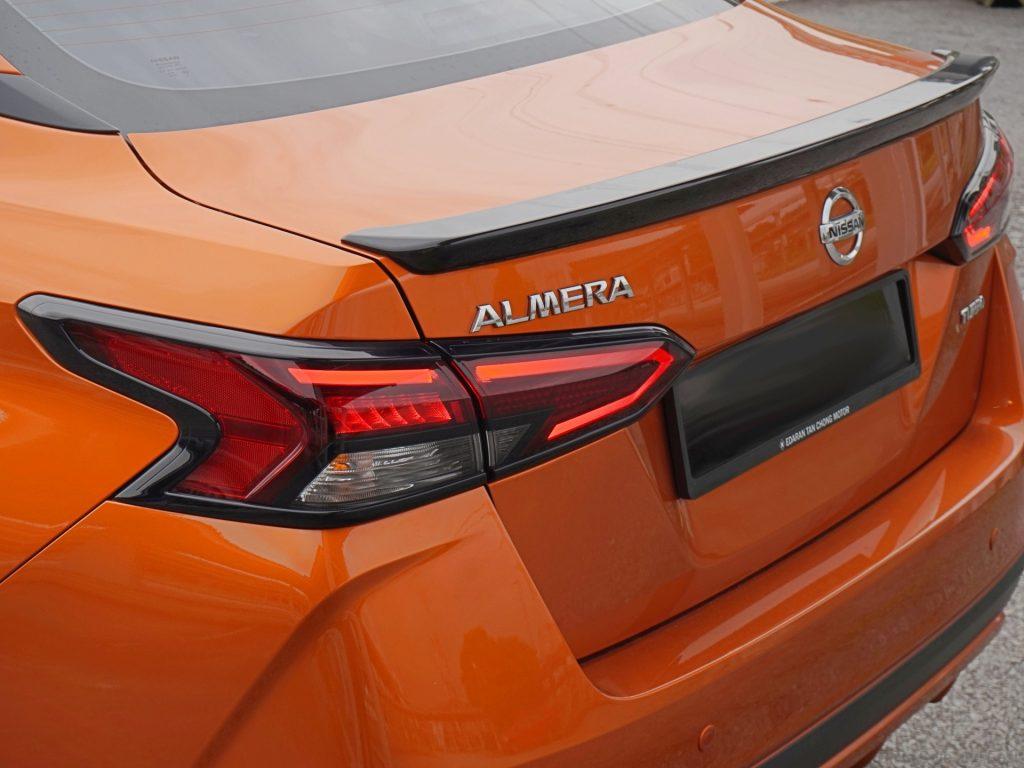
The LED taillights are surrounded by a glossy black trim that makes it look like it’s wearing eyeliner – it’s a pretty nice effect that underscores the shape of the taillights a little more. With the lights on, the LED combination lamps give off a pleasant glow that trace their inner edges. More character lines define the car’s rear haunches.
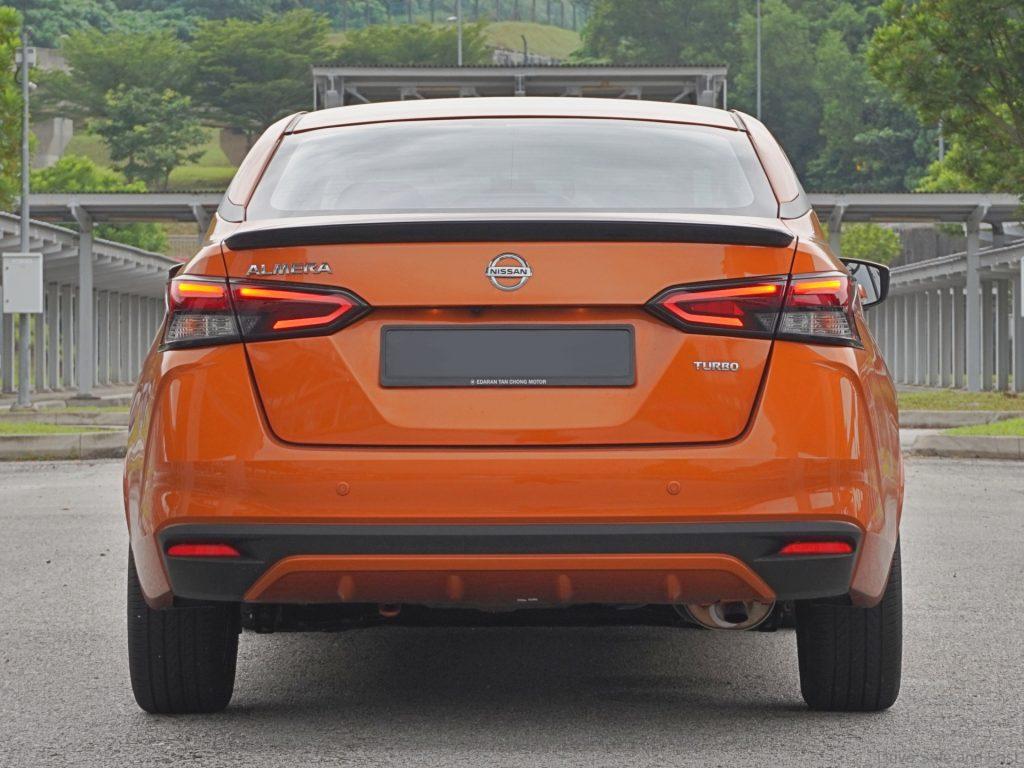
You get the Almera badge on the back, on the upper-left side. For some reason, Nissan decided to put the ‘Turbo’ badge (in case people behind you didn’t know you had forced induction) below the right taillight instead of aligning it with the other badges. Look a little lower and you’ll spot an interesting detail – the black trim around the rear diffuser actually has a faux carbon fibre trim – a theme that carries over to some bits of the interior. A sole, downward-angled tailpipe is hidden behind the right side of the rear bumper.
Looks are subjective – and I’m entirely conscious I may be seeing this with buyer’s goggles – but I’m quite certain the N18 Nissan Almera is among the nicest looking cars in the B-segment available today. Whether it’s under the afternoon sun or bathed in city lights after dark, the evolution in Nissan’s design language has clearly paid off here. The iconic Monarch Orange paint too was a bold choice from the brand that helps it stand out from the more pedestrian-looking usual suspects in the B-segment.
Interior: If I had to pick a car seat to be stuck in traffic in…
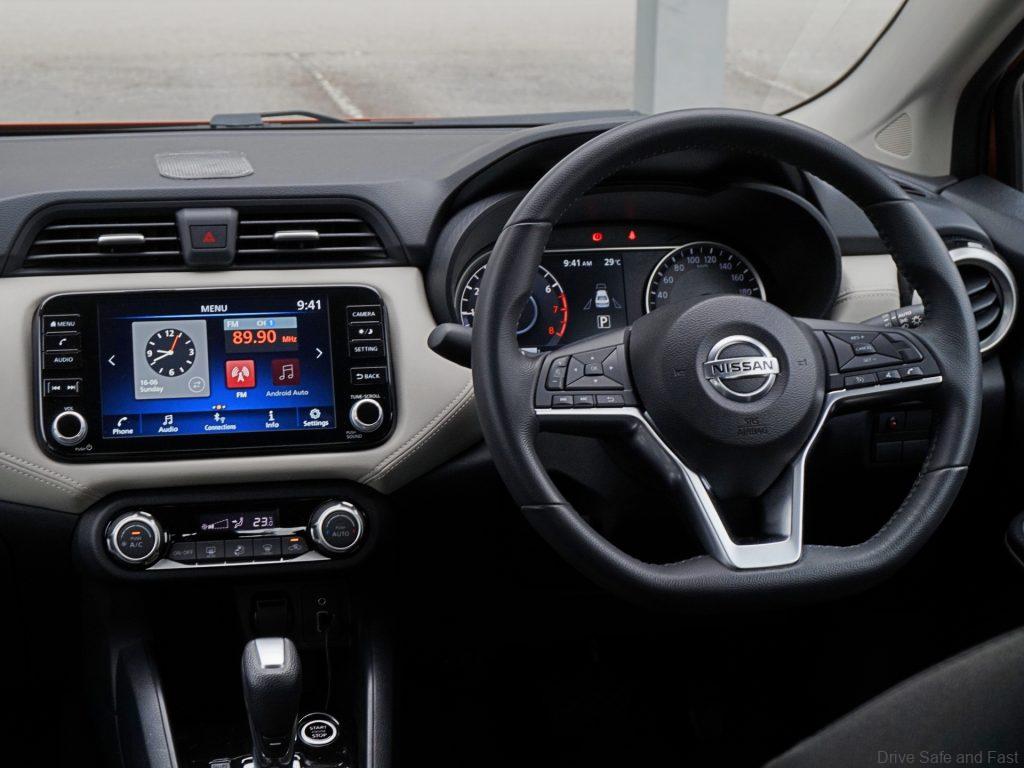
Stepping into the Almera for the first time, I had to do a double-take and check if the engine was actually running. It’s pretty quiet and well-damped on the inside – enough to make you feel comfortably isolated enough from the outside world. Without looking at the spec sheet, you’d be hard pressed to be able to tell it’s a 3-cylinder engine humming away under the hood – the characteristic vibrations of the naturally imbalanced 3-cylinder setup have been so effectively damped that none of it carries over into the cabin or the steering wheel. Everything feels solidly put together – no rattles or squeaks, nor any rough plastic edges. The top of the dashboard and parts of the door are still made of hard plastic – par for the course for the segment – but they feel solid with no flex. You also get some light grey faux leather upholstery that stretches horizontally across the dashboard – it’s a nice touch to break up the monotony of what would otherwise be an all-black affair, but time will tell how the colour holds up with age.
Driving position and visibility are good all around. The leather-wrapped steering wheel offers both tilt and telescopic adjustments – one of those things where you adjust once and never have to worry about ever again. It feels pretty good in hand with grooves at the 10 and 2 o’clock positions, while its flat-bottomed design hints at sporting pretensions – it’s a nice touch to separate itself from the pack in the category, plus it gives you just a bit more leg space when getting in and out. The signal stalks behind the wheels feel remarkably solid and flick up or down with a satisfying thunk – perceived quality is pretty strong here.
Buttons on the steering wheel, head unit and air conditioning are tactile enough, while the knobs rotate with tactile bumps that don’t feel cheap. You get an 8-inch touchscreen on the head unit that is pretty sharp and vivid. Right below the air conditioning unit is a recess with a powered USB-A port to connect your device to the head unit, as well as a separate AUX port and a cigarette lighter socket. The cavity is reasonably deep enough for you to chuck your phone in there, but don’t expect it to be able to lie flat unless it’s particularly compact – my 162mm long Nothing Phone (2) needs to sit tilted against the edge of the space to fit.
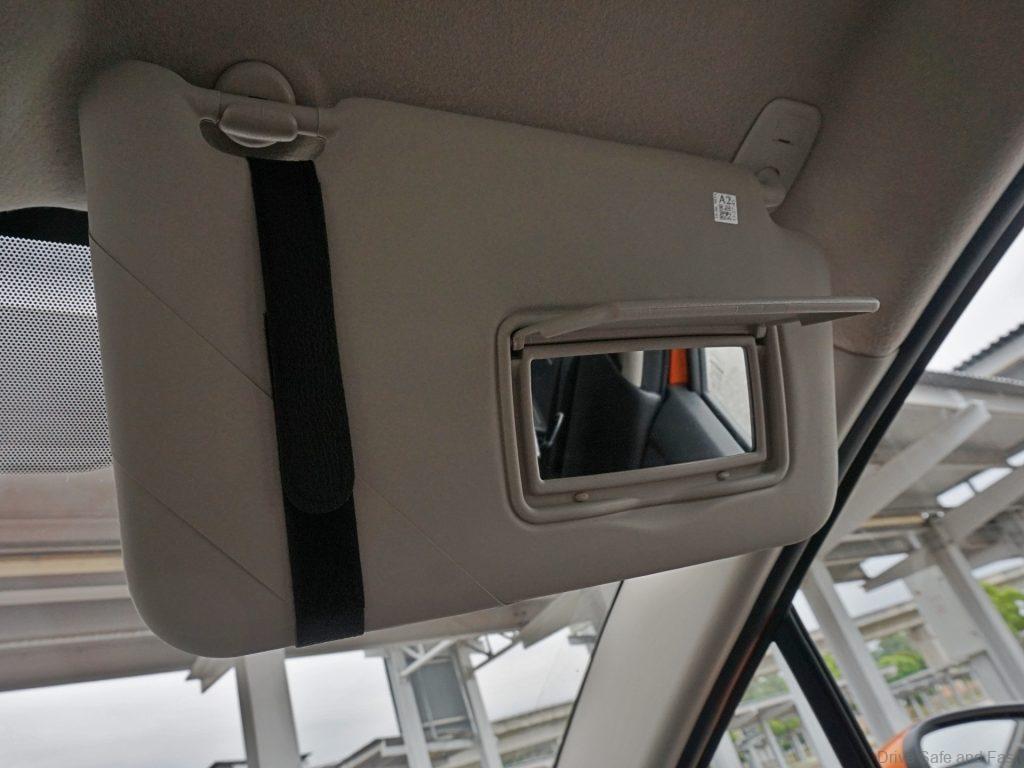
Up top, both sun visors get vanity mirrors, but no lights. Given how steeply raked the windscreen is, the visors are also pretty large, so they tend to get in your face a bit when folding them down.
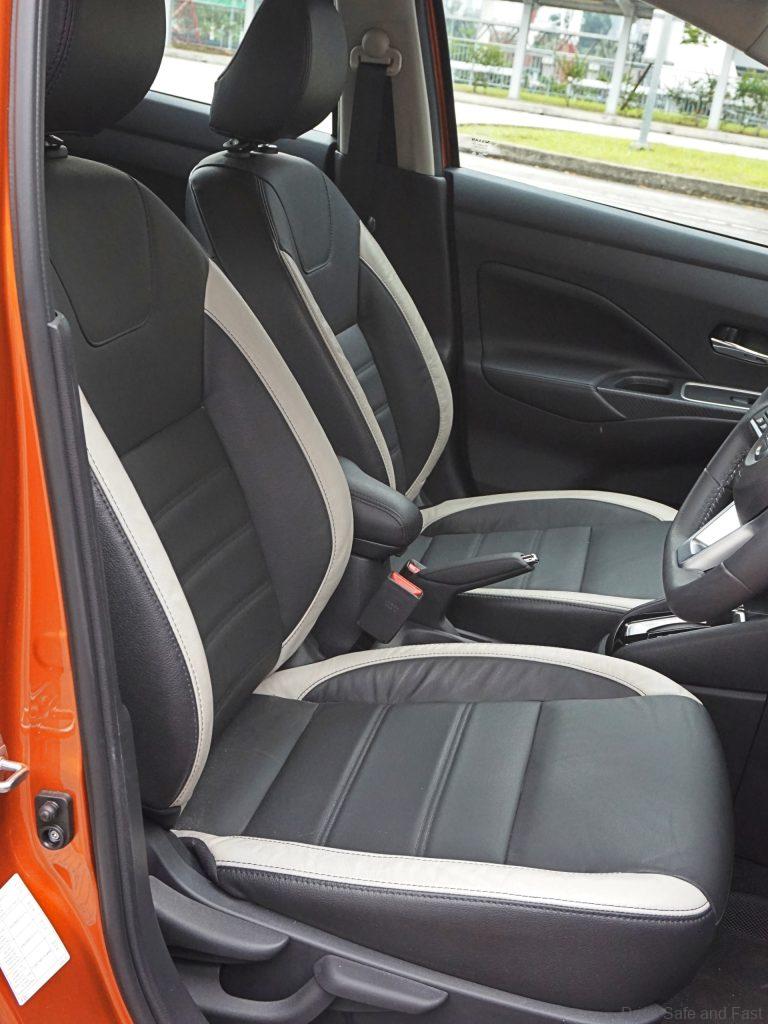
The leather seats here definitely deserve a special callout – I’m not sure what engineering wizardry went into these, but Nissan’s “zero-gravity inspired” seats that have been making their rounds across the past decade or so are present here – and they are with absolute certainty the most comfortable seats I’ve ever planted my butt on in a car. From the way they support your back and distribute your weight, these are easily best in class and make both long drives as well as traffic jams so much more bearable. The side supports do a pretty decent job of keeping you in place too if you decide to get a bit stupid around corners.
Perhaps my only complaint with the seats would be in the choice of colour – black leather is fine, but the sides also come with light grey accents, presumably to share some cohesiveness in design with the dashboard. My concern is that these are common contact points, but at the same time they aren’t covered by your back or legs when seated. I’m not sure yet how these might stain or hold up over time, but some unsightly wrinkling is already easily visible on the lighter surface just over half a year in – it definitely wasn’t there when it rolled out of the showroom.
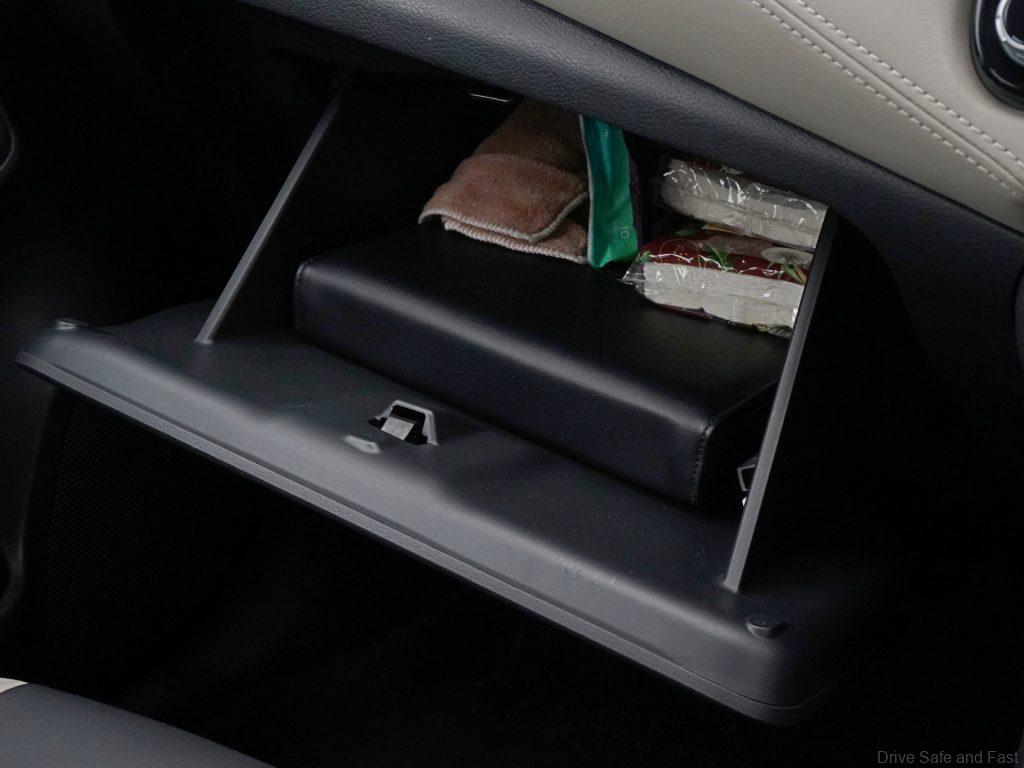
The glovebox is fairly standard – no soft-opening, and no lighting on the inside, but it feels solid and is reasonably spacious.
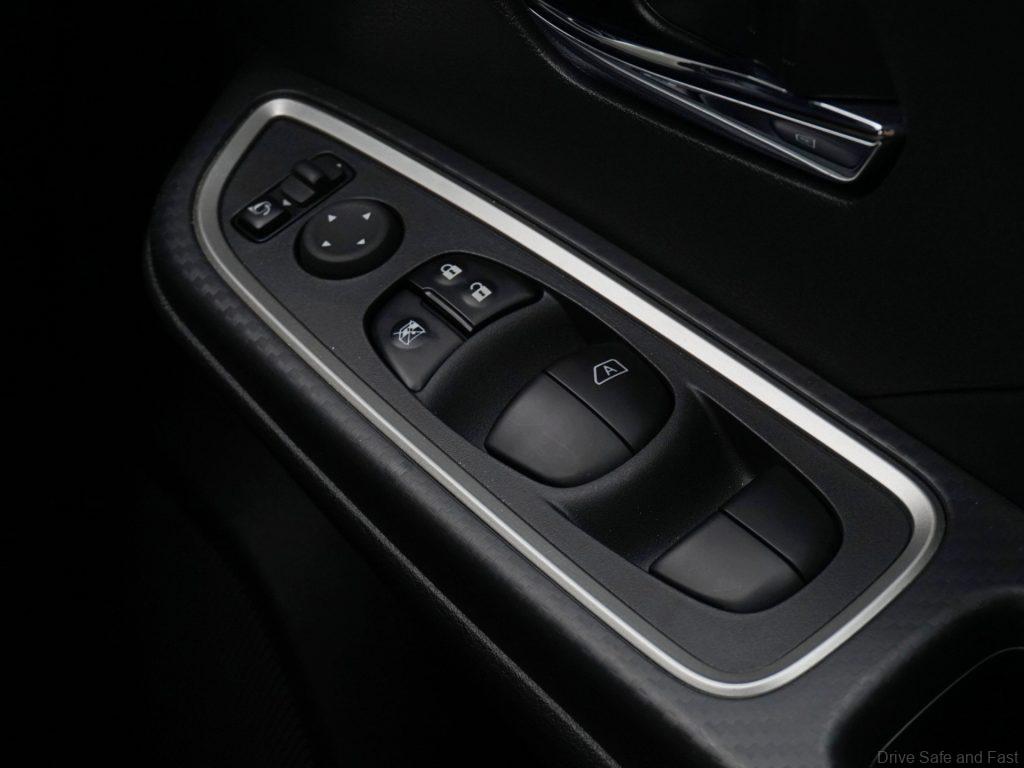
The faux carbon fibre trim near the rear diffuser carries over into parts of the doors. The driver’s door here is pretty packed with switches. You get the standard side mirror selector as well as directional buttons to adjust their tilt. Lock and unlock buttons are placed close together and apply to all doors at once. Beside them is a button to lock all passenger windows from being wound down. Side window control buttons are all unmarked except for the driver’s one, which is the only one that’s automatic.
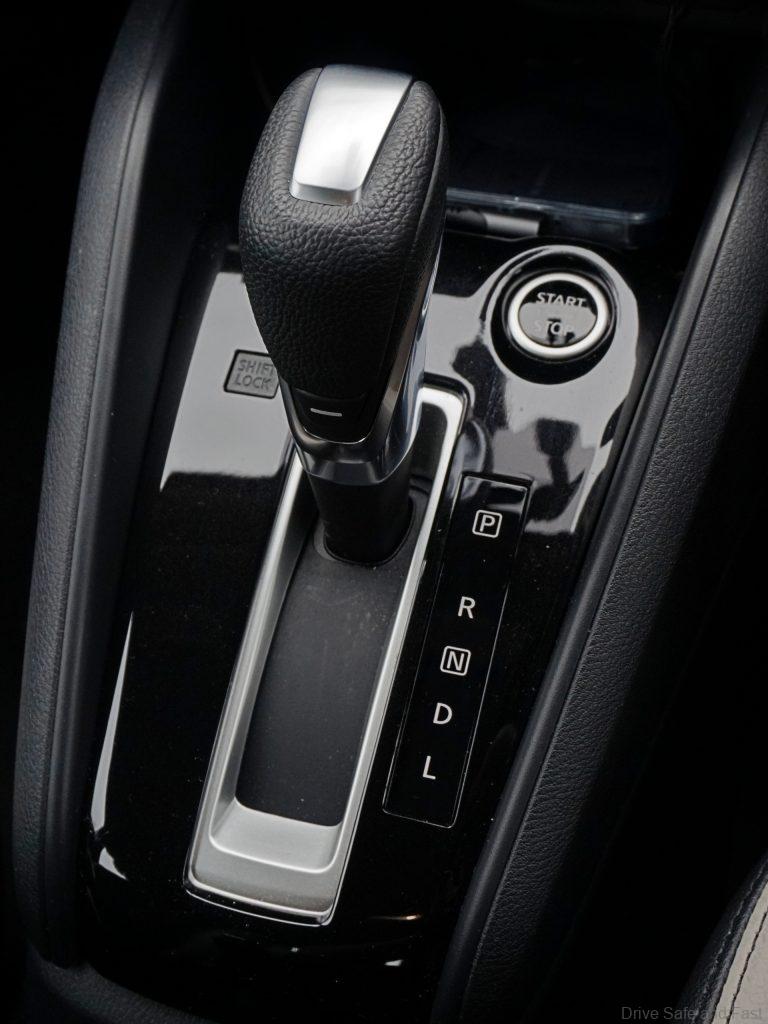
The gear shifter feels solid enough, with a front-facing button that needs to be depressed to shift. There the base of the stick, facing the rear is a hidden Sport Mode button that, when pressed, the word ‘Sport’ lights up next to the speedometer – but more on that later. The glossy trim around the push start button and shifter is a bit of a fingerprint magnet.
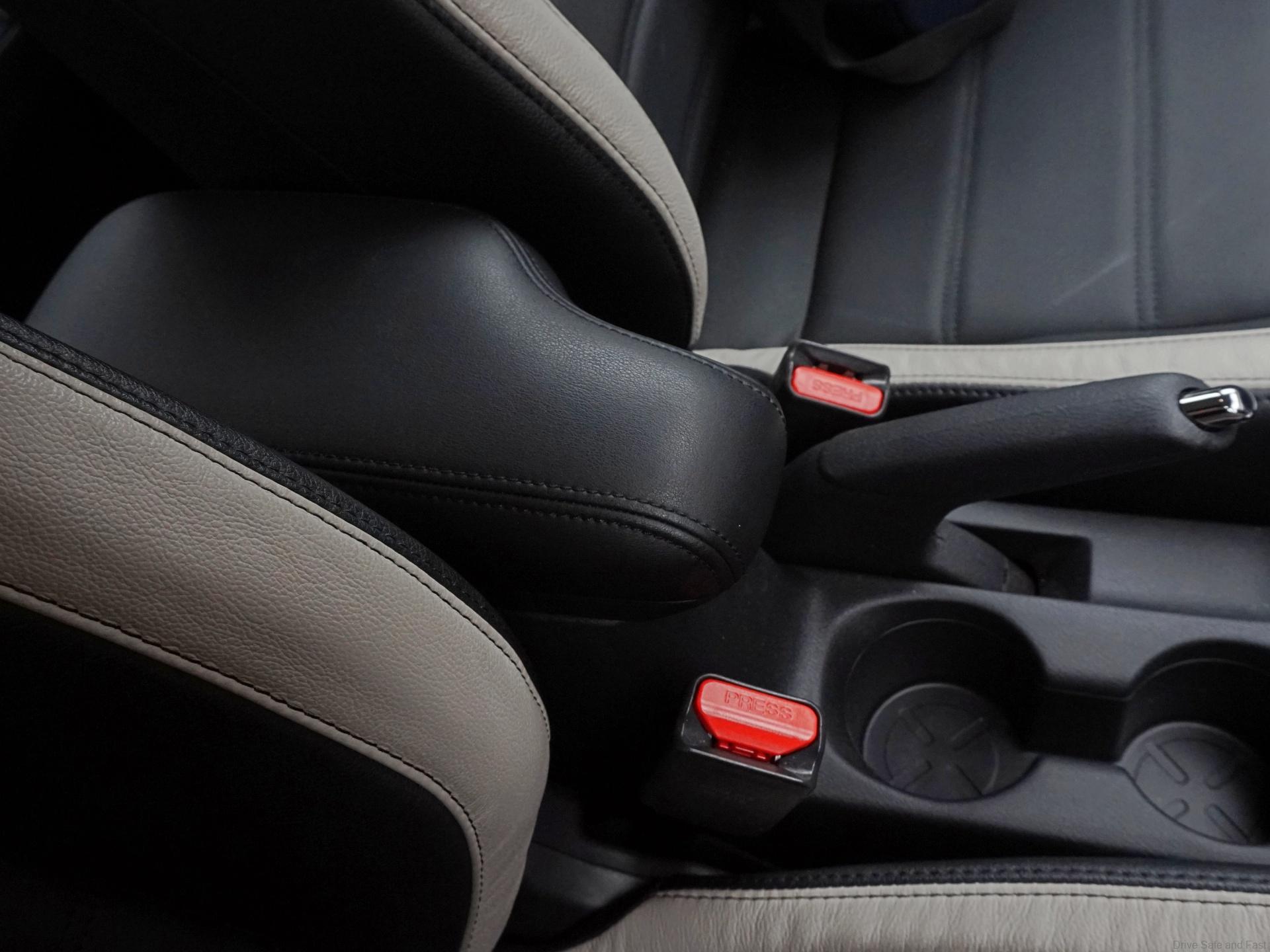
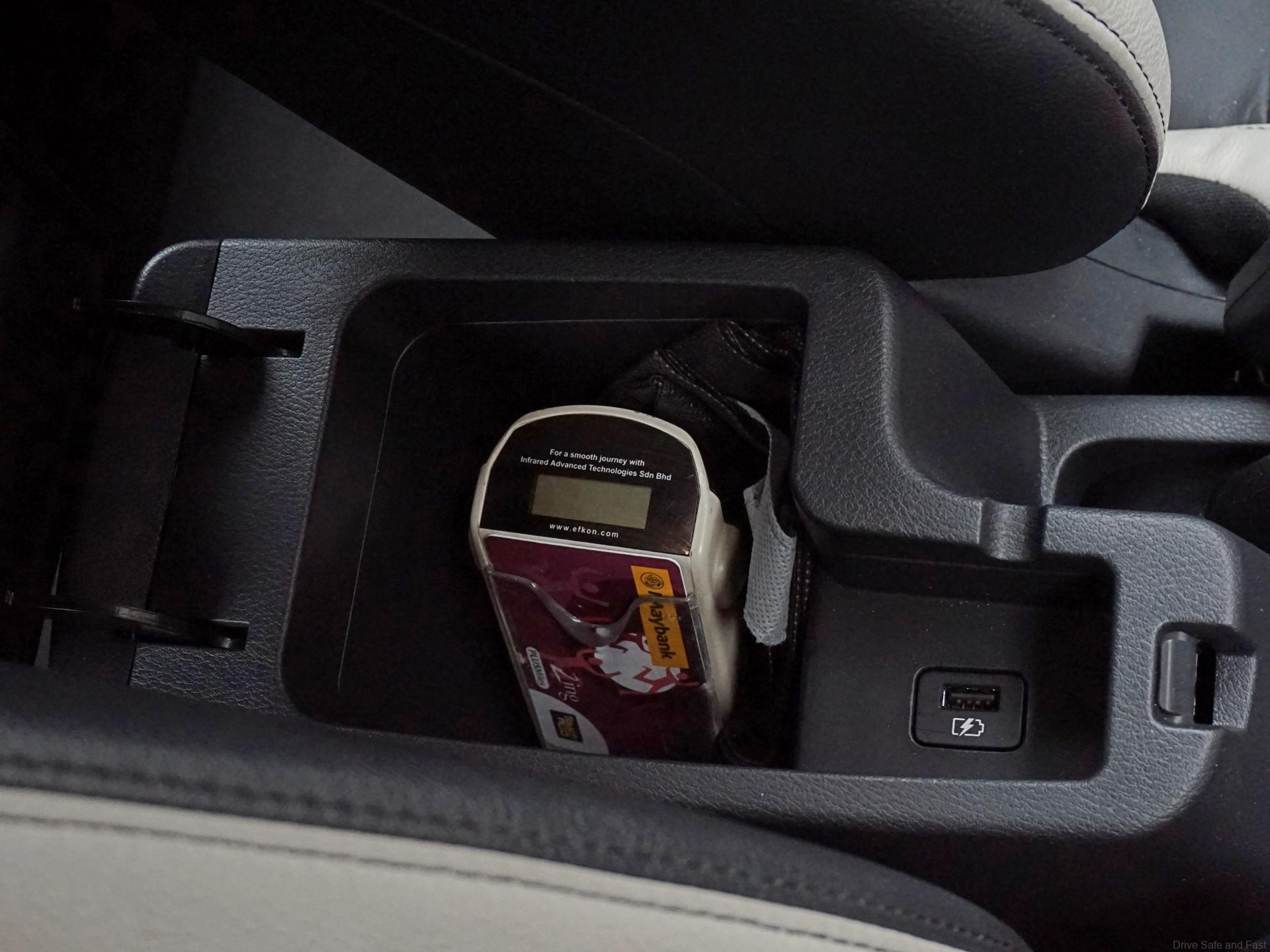
You get 2 cupholders parallel beside the handbrake lever – I honestly prefer it this way, because it gives whatever you put in them all the vertical clearance they need compared to some cars that tuck the cupholders below the head unit or A/C controls. Further behind, nestled between the front seats is the armrest. The soft leather top makes it pleasant enough to lean your elbow on, but it’s a little far back for my liking and storage space inside is rather limited. It’s just enough to hold your Smart Tag along with a canvas bag and maybe some other small objects, but it’ll be a bit of a squeeze. A single powered USB-A port is also present, along with a groove on the side for the cable to exit, but I can’t imagine fitting any USB cable into that port while still being able to close the compartment with the plug in place.
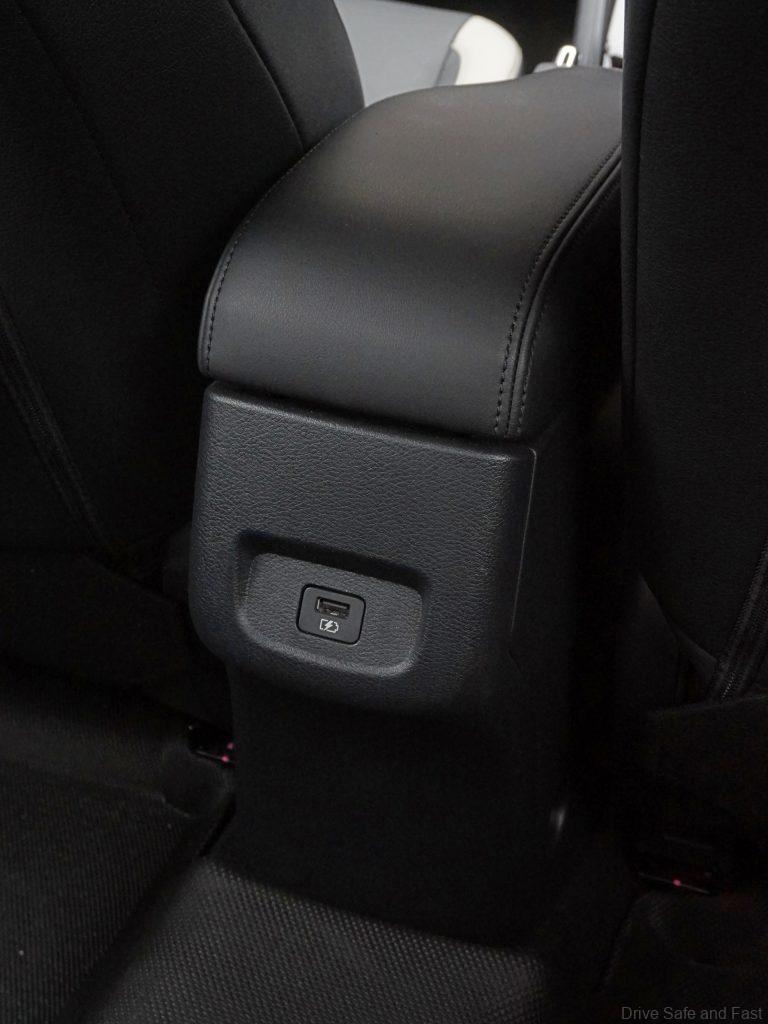
Moving around to the back, rear passengers get a single USB-A port for charging. No rear air-cond vents here, and because the armrest and storage compartment are a little far back, it protrudes out the rear a little – but not enough to have to worry about your shins when moving between the back seats.
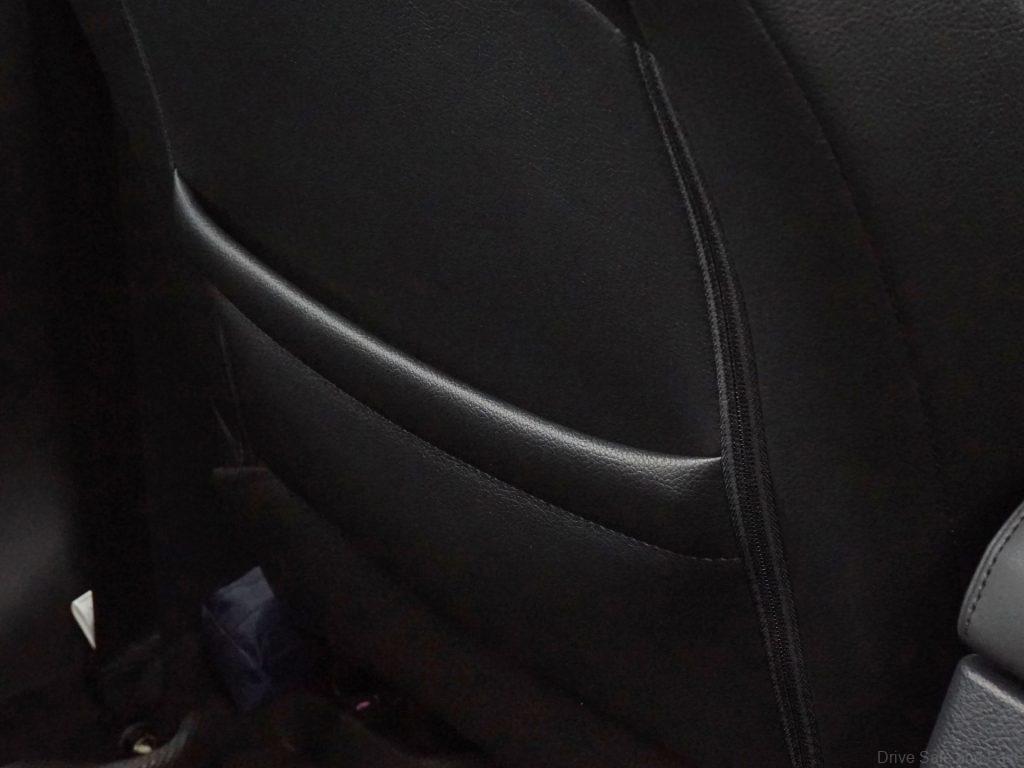
Probably the first sign of B-segment cost-cutting that has become increasingly commonplace, there’s only a pocket on the back of the front passenger seat, but the back of the driver’s seat remains bare. A single pocket’s usable, but more storage space is always welcome. At least it isn’t the mesh kind.
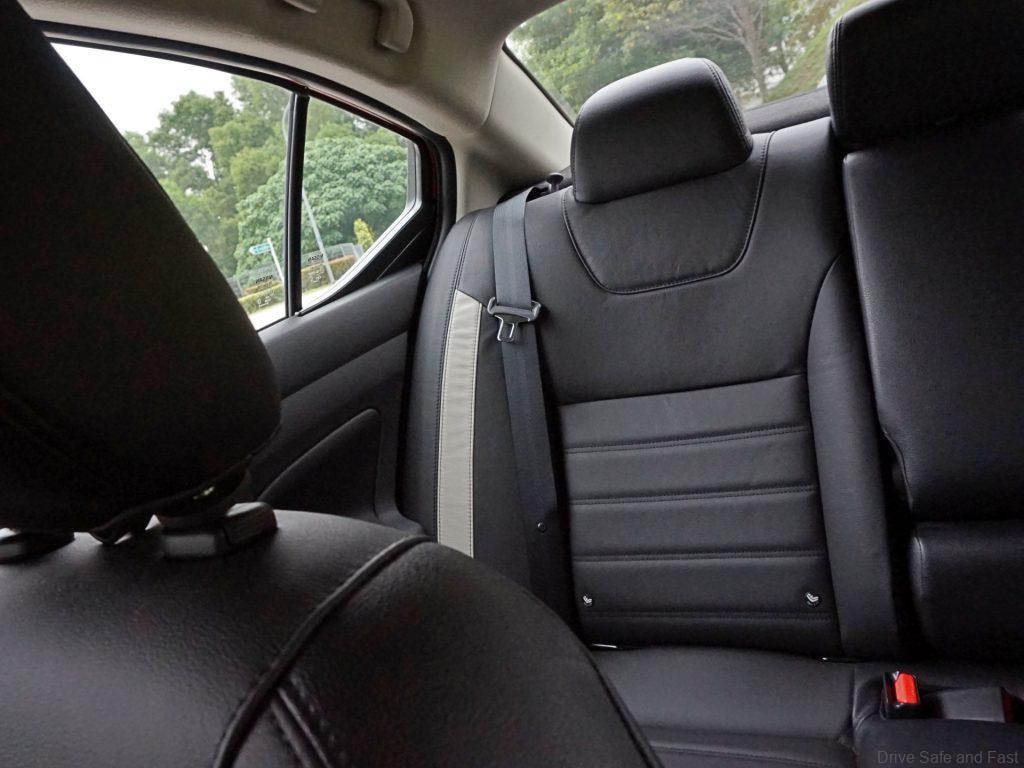
The rear seats get the similar treatment as the front, but they’re arguably a little less supportive. Rear headrests are also fixed. The Almera gets a central armrest for the rear seats that can be folded down as standard, with 2 cupholders. There’s enough space for 3 adults in the back with the armrest folded up, though they’ll be sitting shoulder-to-shoulder. Otherwise, the rear bench seats 2 comfortably. With the car’s relatively long wheelbase (how the B-segment has grown), legroom in the back isn’t really a problem.
Overall, it’s a very modern and inoffensive cabin. It’s plush and refined enough to make long traffic jams or lengthy journeys more comfortable with all the creature comforts you could want from a car in this segment, and I’ll say it again – those front seats are truly something else.
Driving Experience: Smooth operator
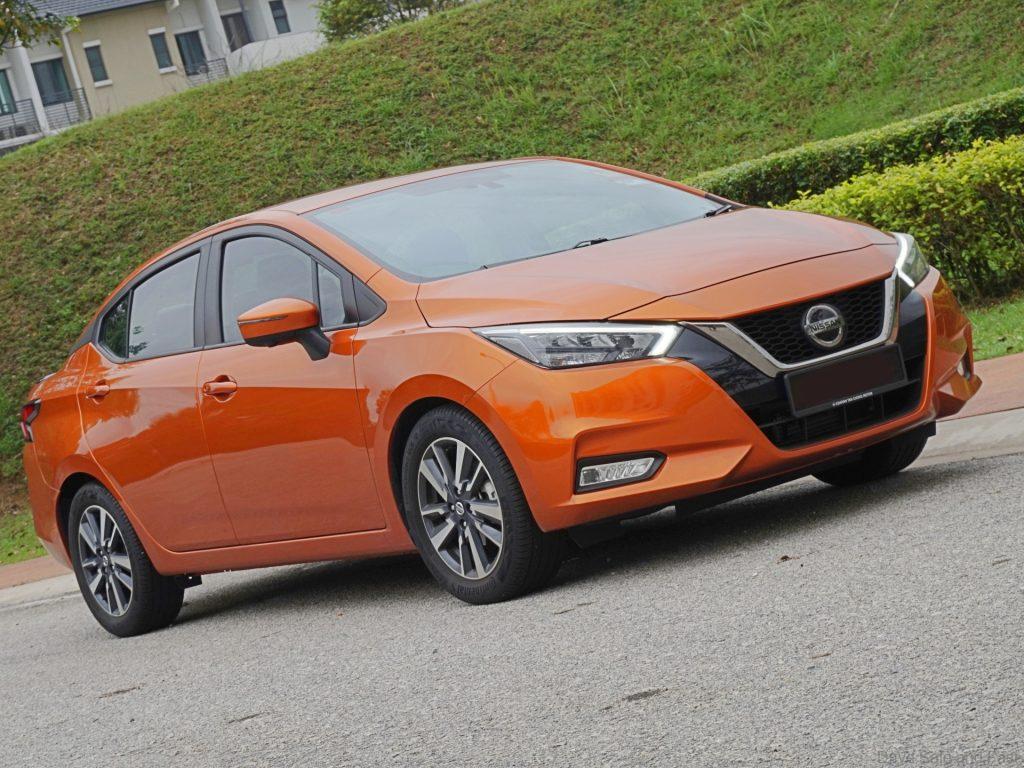
I’ll get right to the most pertinent question: Is it fast? Not exceptionally – it won’t make your butt dyno clench in terror (or delight), but it can feel deceptively quick. That is, if you keep your expectations in check, because even with turbocharging, a 1L engine won’t defy physics. Still, numbers don’t tell the whole story – it makes the century sprint in a little over 10 seconds, which is pretty standard in this segment, but how it gets there makes all the difference. Horsepower is only a modest, round 100 PS while it makes a decent 152 Nm of torque sent to the front wheels to move its 1,114 kg curb weight. With the wonders of forced induction, peak torque comes early – between 2,400 to 4,000 rpm. This means that from a standstill or from low speeds, you don’t have to depress the accelerator that much to feel like it surges forward with enthusiasm – and it does so with an effortless grace and an engine note that is barely audible from the cabin unless you push it towards the redline. When it does get heard, you get that characteristic 3-cylinder drone – it’s not particularly loud nor is it unpleasant paired with that subtle turbo/CVT whine, but I wouldn’t call it half a straight-6.
Nissan also highlights the Mirror Bore Coating Technology that was taken from the iconic Nissan GT-R and applied to the HR10DET engine in this Almera to reduce friction in its cylinders. I’m not denying its efficacy, but it’s also some marketing spiel, of course – features originally developed high up the food chain tend to make their way down to the masses eventually.
The Almera’s X-Tronic CVT transmission comes with something Nissan calls D-Step Logic, which basically simulates gearshifts by building up revs, dropping them, then building them up again like a conventional automatic. It’s completely unnecessary, but it does a pretty decent job of giving that feeling of shifting through gears and mitigates the much-maligned rubber-banding effect of most CVTs. I can’t help but wonder how much more efficiency Nissan could squeeze out of this thing without simulated gearshifts. One minor annoyance with the CVT gearbox, though, is that it can feel a bit juddery in the crawl-stop-crawl rhythm of Klang Valley rush hour traffic. Even with the shifter on D with Sport mode disabled, it feels as if it was tuned to aggressively fish for as low a gear ratio as possible when at a standstill or when creeping forward, so you can have all that acceleration on tap but also with a lot of engine braking – though it’s something you can adapt to and smoothen out over time. With Sport mode enabled, it doesn’t exactly get any faster. The throttle response just gets tightened up slightly and when on the move, it keeps the revs within that peak powerband of 2,400 to 4,000 rpm.
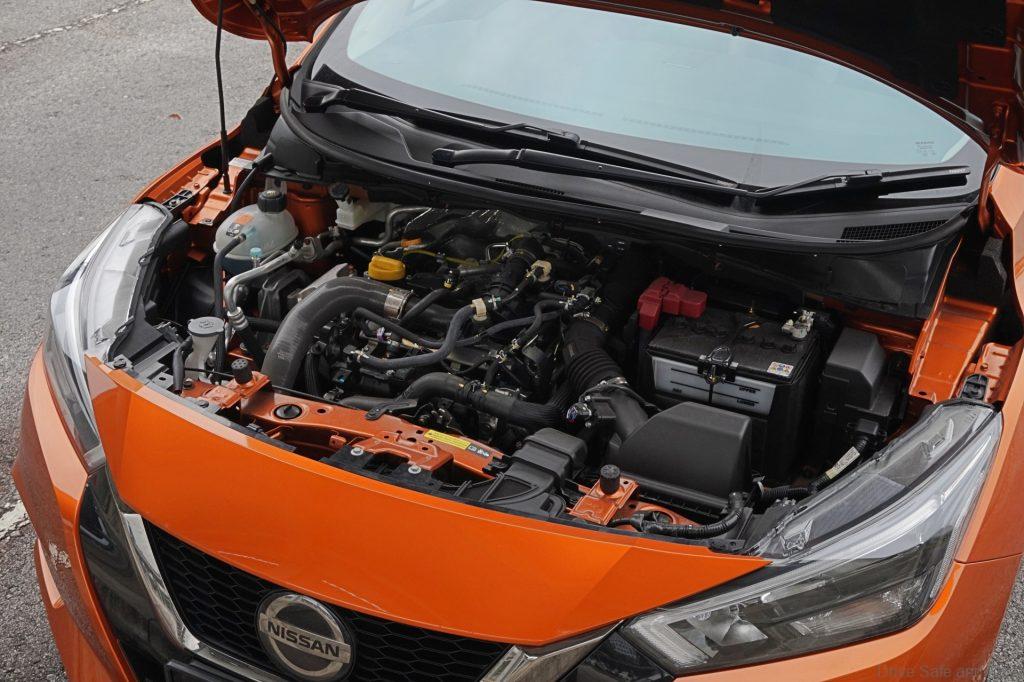
It’s a shame none of that engineering went into tidying up the engine bay, because under the hood, it’s a hot mess. You get pipes and tubes everywhere, without an engine bay cover to keep it all neatly hidden away.
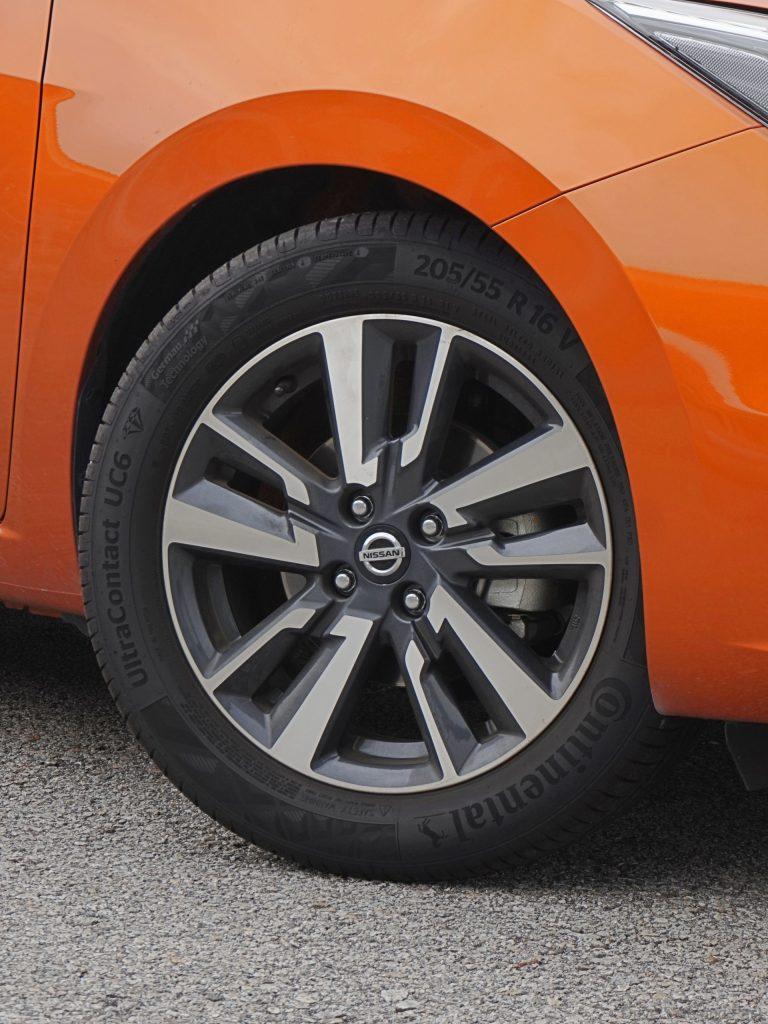
The Almera gets the usual B-segment setup of disc brakes in the front and drum brakes in the rear – which are just fine for a relatively light car, while brake feel is linear and reassuring on the pedal. The rims are shod with Continental UltraContact UC6 rubbers from the factory in 205/55R16 – probably the widest in its class – and they do a fine job of retaining grip around the corners, even in the wet. It’s no Mazda2 or Ford Fiesta, but it’s competent enough at attacking corners at speed if you’re sensible about it – and you should be, because the electronic power steering is the usual B-segment affair, which is to say that it only does a middling job at communicating what the front wheels are doing. The suspension is sprung a little stiff, but it does a fairly good job at remaining composed over bumps and the occasional pothole without feeling crashy. Over speed bumps, it remains poised over the up-down-up motion and then carries on, fuss-free.
All this comes together to make up a car that feels sportier and faster than it actually is. It’s definitely not sports car-fast, but the quiet confidence in the way it accelerates almost tricks you into believing there’s more where that came from if you just stepped harder. Acceleration is sufficiently brisk all the way up to the national speed limit. However, get too high in triple-digit speeds and the 1L engine starts to show its limitations – it’s quite likely that Honda’s competing 1.5L VTEC mills will continue to pull at higher speeds where this one begins to run out of breath, though it remains composed cruising at highway speeds. But let’s be real – you won’t (and shouldn’t) be driving at those speeds most of the time on public roads anyways. This is a car that really excels as a comfortable cruiser, driven smoothly with very accessible torque to get you up to the range of speeds you’ll be using most – whether it’s in the stop-and-go rhythm of urban Klang Valley or at comfortable triple-digit speeds along the North-South Expressway. I have to hand it to Nissan’s engineers – clearly huge strides have been made in developing a modern 3-cylinder 1 litre turbocharged engine. Mated to a CVT transmission with D-Step Logic, I can with absolute confidence say that for all its intended purposes, this powertrain setup is the replacement for displacement.
Features & Practicality: What’s it like to live with daily?
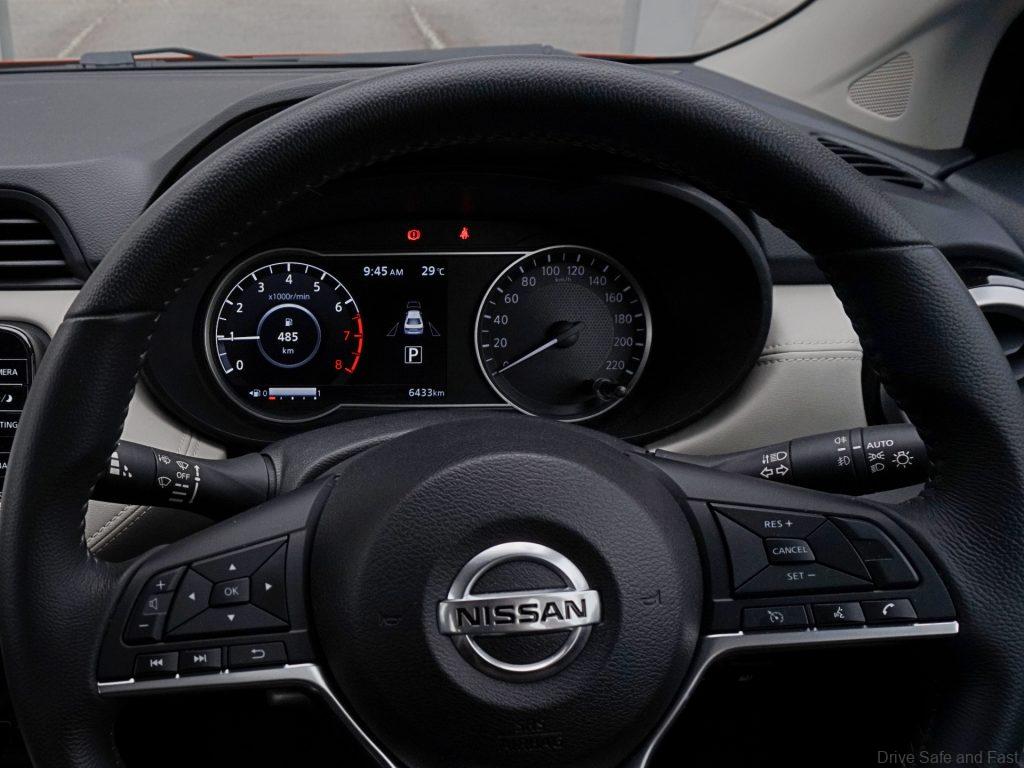
The steering wheel is quite replete with buttons – from audio controls, navigation buttons for menus, call controls as well as cruise control, but the first thing you might notice getting into the driver’s seat is in the instrument cluster where only the speedometer is analogue – everything else is a digital display. It’s pretty sharp and vivid, and brightness is automatically adjusted depending on whether or not your lights are on. By default, it shows the tachometer, but the directional buttons on the steering wheel let you navigate through a few pages and settings. Cruise control is of the passive variety, accessible via steering wheel buttons, but it’s not something I’ve personally felt comfortable using.
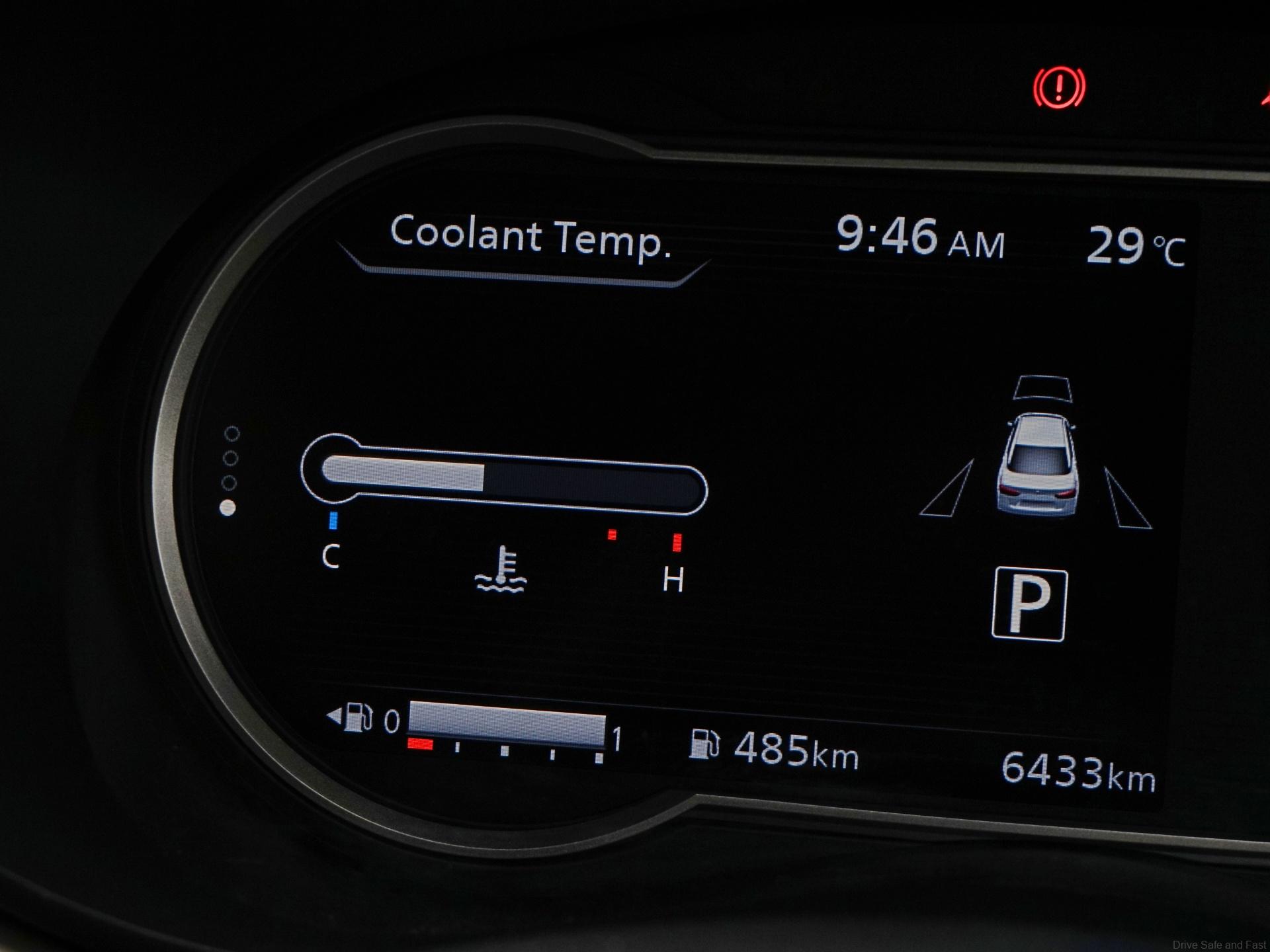
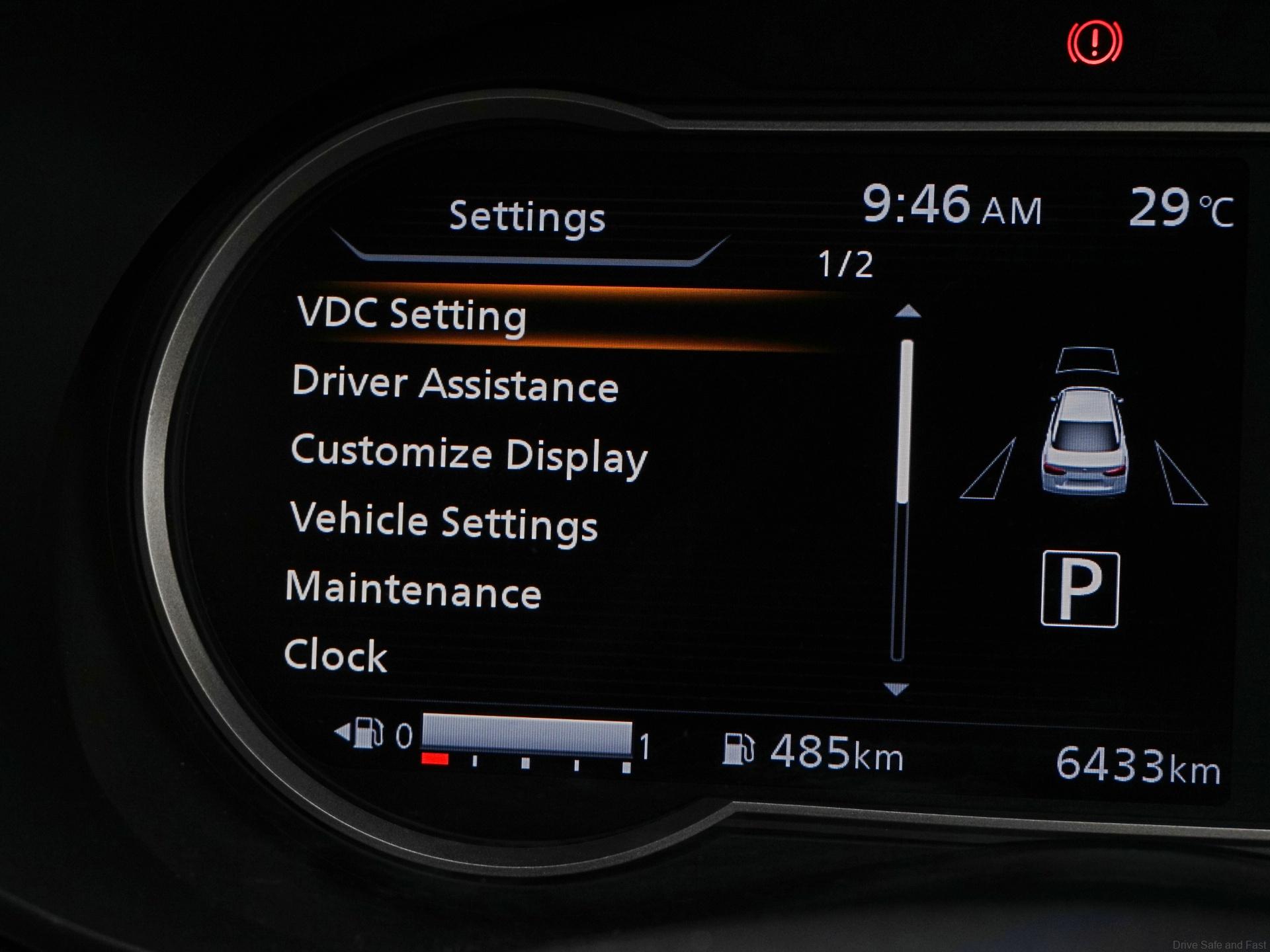
There’s actually quite a bit to sift through, including a plethora of settings and a couple customisation options down to the sensitivity of the automatic headlights, but as much as I poked through these, I feel like everything was already designed to work best at their default settings, which will be appreciated by drivers who do not like to tinker. For some reason, the clock in the instrument cluster is set separately from that of the head unit.
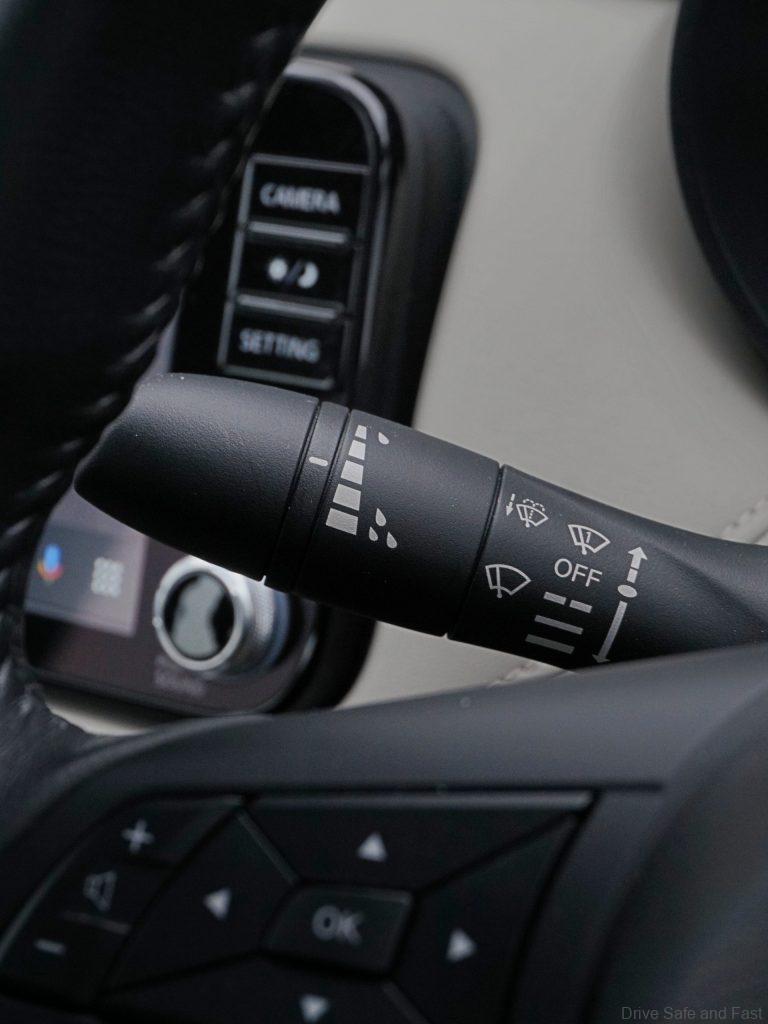
Remember the stalks I mentioned earlier that seemed to ooze quality? I think they’re over-engineered – at least for one aspect of the windscreen wipers. For some reason, when you set the wipers (the stalk’s on the left-hand side) at their slowest setting, which is to wipe intermittently, you get to choose between 5 whole levels of delay between each wipe. Yet when you set it to wipe continuously, even at its fastest setting, it can’t quite keep up with very heavy rain. The stock wiper blades were honestly trash, so swapping to some hydrophobic wipers helped somewhat – but this only served to highlight an issue with the globalness of this car, where it wasn’t localised enough to adapt to the torrential storms we get in this part of the world. To drive this point home, the sound of rain hitting the roof is very apparent from the cabin in what is otherwise a very quiet car. It almost feels as if it was built for a climate with much gentler rain.
Meanwhile, the signal stalk sits on the right-hand side, which also controls the lights. The car comes with automatic headlights that activate if it detects a dark environment – while you could technically adjust the sensitivity in the settings of the digital instrument cluster, I’ve personally never needed to. The default sensitivity already seems to work perfectly, turning the lights on at just the right level of darkness as you enter tunnels, car parks, or when it gets dark outside. It’s definitely tuned better than some cars I’ve experienced, where the lights come on at the slightest hint of overcast skies. Front and rear fog lamps are also controlled by a separate ring on the signal stalk, though I’ve never had to use these so far.
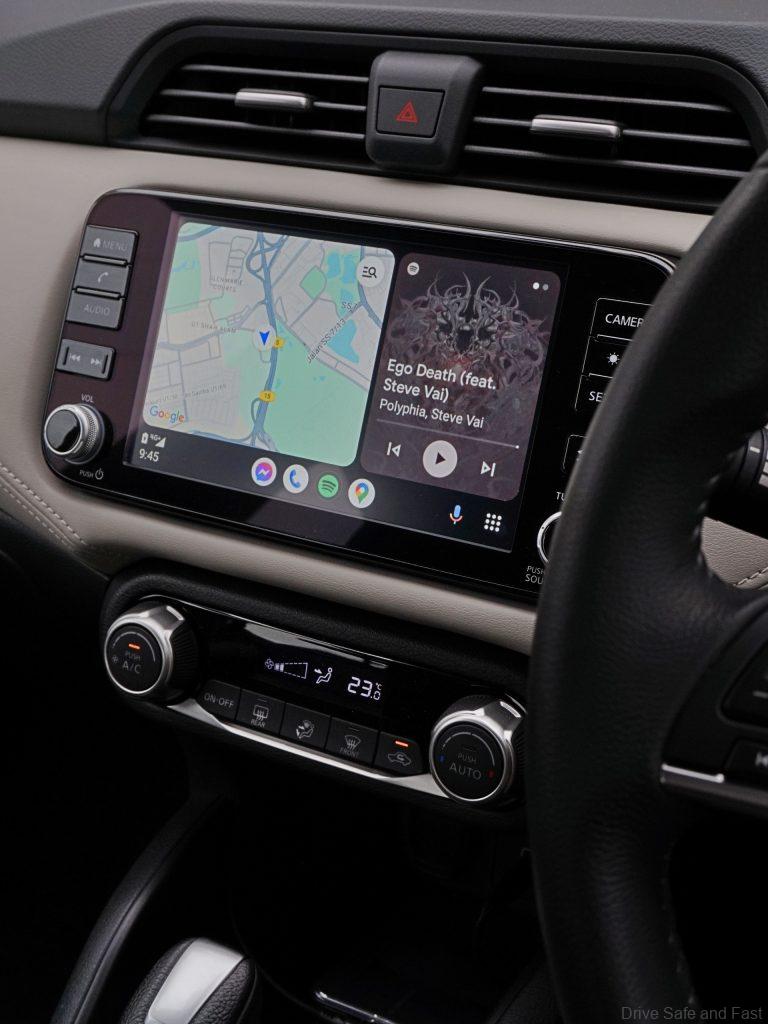
The touchscreen head unit comes with both Apple CarPlay and Android Auto built in. As a long-time Android user, I can only comment on the latter – and the integration’s pretty great. Plugging in my device for the first time, the initial setup was quick and seamless. From there, the default home screen layout is your navigation app of choice on the left and your music player on the right. In terms of navigation, Google Maps seems to be integrated better than Waze – it’s more receptive to voice commands and even automatically switches to dark mode when the car’s headlights are on. Notifications for Whatsapp messages appear unobtrusively from the top – and you can prompt the unit to read them out to you either by tapping the corresponding button on the touchscreen or by voice command. Audio is a pretty standard affair, channelled through an okay-sounding 6-speaker setup, with basic EQ options in the settings. Most of this is controllable via buttons on the steering wheel, including adjusting volume and skipping tracks along with a dedicated button to activate the microphone to receive voice commands.
Even without a smartphone plugged in, the standard software on the head unit is functional and surprisingly decent. Impressively, it even allows customisation via widgets on the homescreen as well as 2 additional pages if you swipe left or right. You get the standard clock, FM radio, shortcuts to specific apps.

For safety kit, where you get the usual slew of acronyms – ABS, EBD, BA, ESC, TC and the like as standard. You also get hill start assist and 6 airbags (alarmingly, the base VL variant only gets 2). There’s 2 sets of ISOFIX mounts for child seats in the rear, as well as seat belt reminders for all 5 seats.
With the more tech-forward safety features, you get forward collision warning as well as autonomous emergency braking. I like that the former isn’t overly sensitive (some modern Hondas I’ve driven are guilty of this) – it seems to be tuned correctly for our driving conditions and, when triggered, it beeps a couple times while the corresponding icon for the front of the car on the instrument cluster flashes yellow. The autonomous emergency braking only works up to 80 km/h, so anything beyond that and you’re on your own.
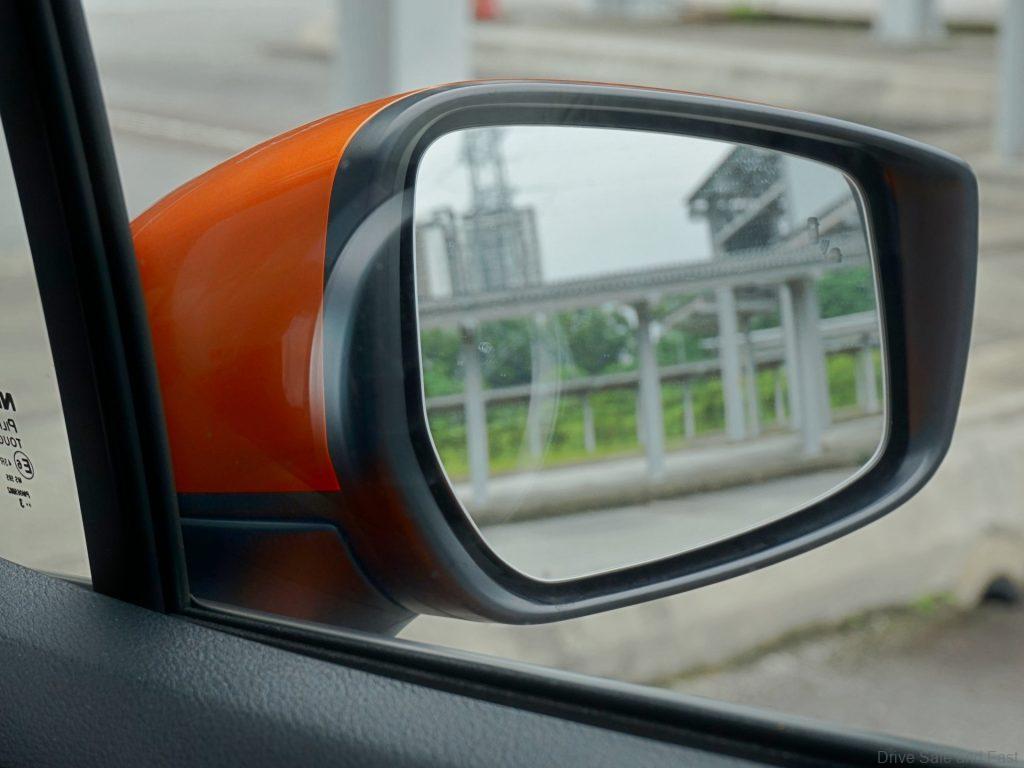
Blind spot monitoring is pretty well integrated into the side mirrors. When the car detects a vehicle in your blind spot, a little icon embedded in the upper outer corner of the corresponding side mirror glows yellow. Flick the indicator in that direction while an object is in your blind spot and the car beeps gently to notify you, while the corresponding icon on the instrument cluster blinks yellow based on the direction of the object.
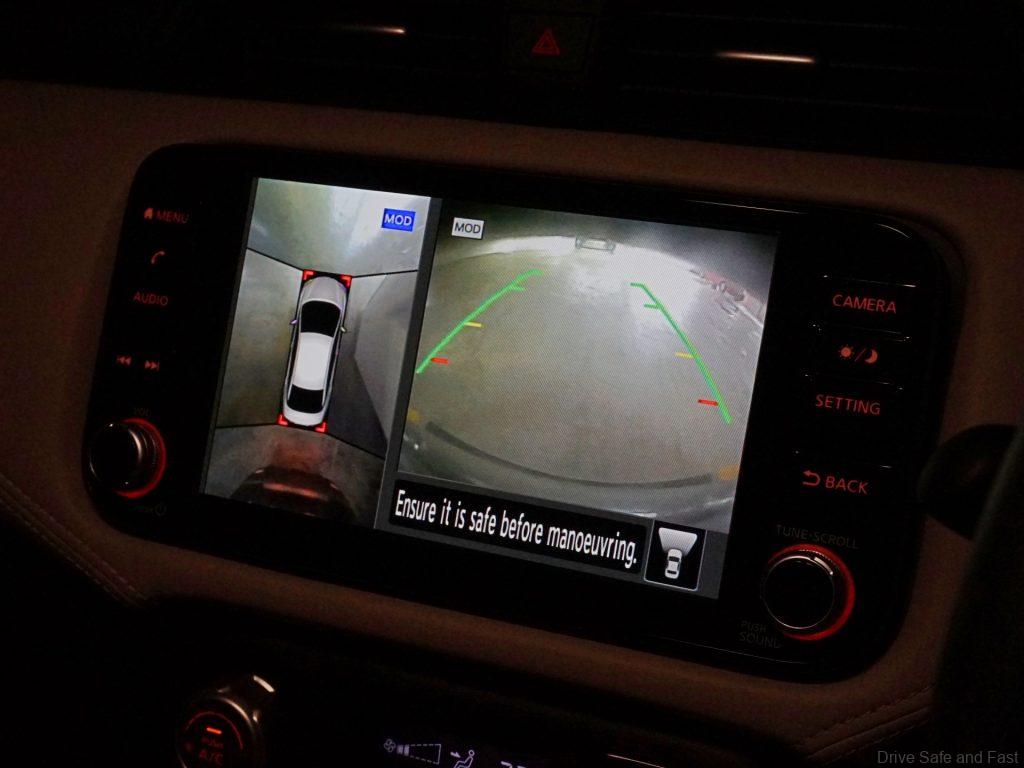
Shifting into reverse, the head unit displays the reverse camera and around view monitor in real time, with guide lines that curve based on your steering input. The camera footage doesn’t come with the best quality or the highest resolution on an otherwise sharp and vivid screen, but it offers a pretty good 360-degree look around you that’s particularly helpful when navigating tight spaces or feeding any obsessive compulsions you might have to park perfectly straight and centred every time. Pressing the ‘Camera’ button also lets you swap between different layouts and views of different cameras – this works even outside of reverse gear, at lower speeds.
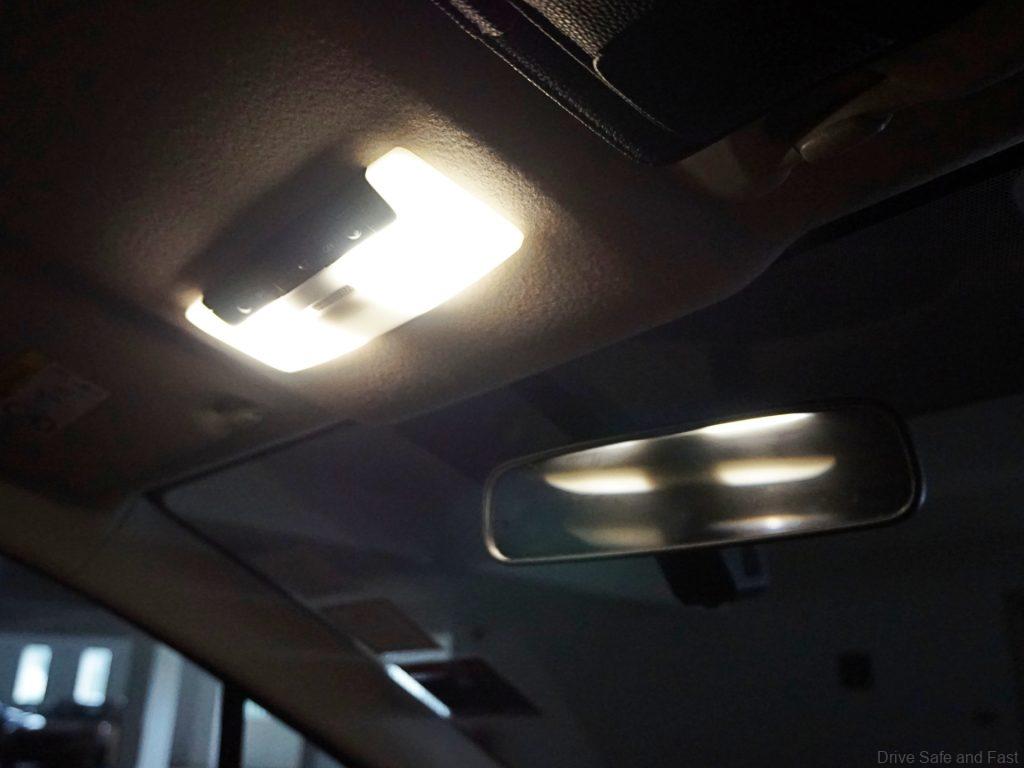
Up on the ceiling, you get separate sets of cabin lights for both the front and rear bench. Here’s something that annoys me – these are actually halogen bulbs that come stock across the range. Upgrading the room lamps to LEDs is an RM150 option – which was something I opted for in the end because frankly, halogen ceiling lights in this decade on a car at this price range is a very difficult pill to swallow.
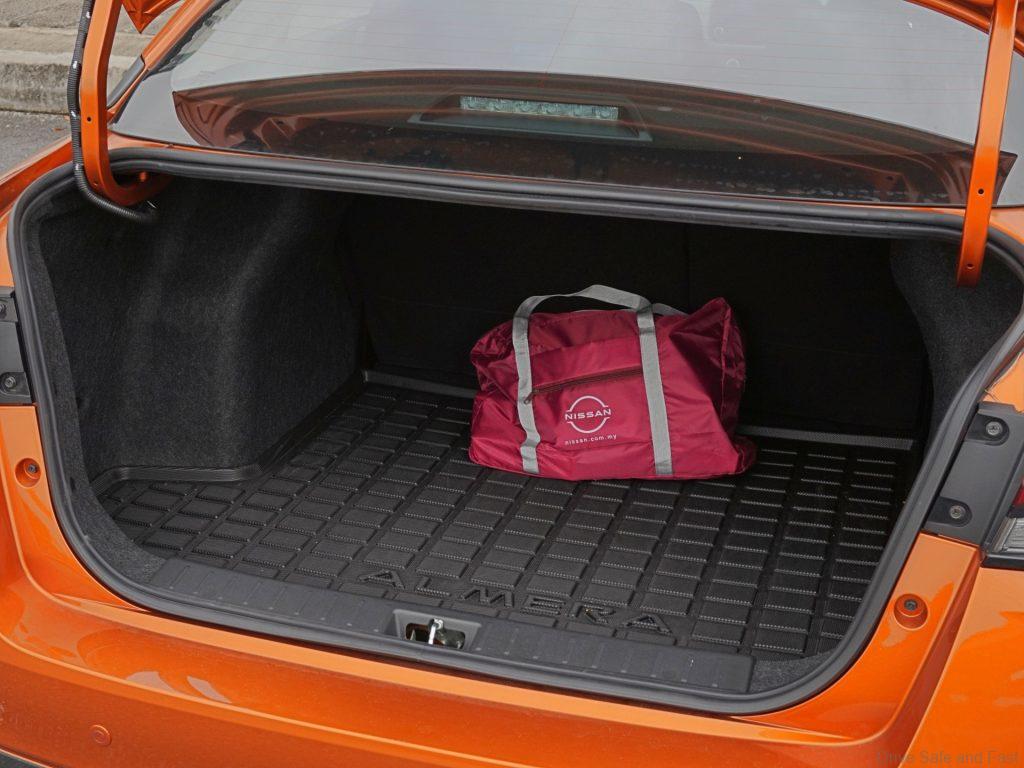
Boot space is quoted at 482L, which is large enough to find 2 large luggage bags and then some. It’s definitely spacious enough for most applications, though usable room is slightly hampered by the way the hinges curve into the boot space when closing the lid. A single halogen bulb illuminates the boot when opened, instead of LEDs. The trunk tray is an RM220 option that makes the boot floor look and feel a little bit nicer than the usual board with fabric cover. I’m sure there are cheaper aftermarket options out there, if you’re so inclined. Underneath the boot floor you get a space saver spare tyre on a steel rim along with the usual set of tools. The rear seats can also be folded down for additional space, but lacking Honda’s packaging prowess, they don’t fold perfectly flat into a seamless surface with the boot.
The car can be pretty economical to run – for one, the engine displacement of only 1 litre means annual road tax is only RM20 (at least, until we get a more modern system of taxation). While fuel economy is rated from the manufacturer at 18.4 km/L, I’ve managed to average between 12 km/L to 15 km/L – this is while being stuck in Klang Valley traffic 80% of the time and not being particularly light in the foot. Perhaps as a testament to its fuel efficiency, Nissan only stuck a relatively small 35L fuel tank in the car. I’m not sure how much weight or costs that decision has saved, but I think most people would’ve preferred a more regular-sized tank while retaining that fuel efficiency.
Service intervals are at every 7,000 km / 6 months (whichever comes first), which is a little shorter than the 10,000 km / 6 months with most of the competition. That’s entirely fine by me, because even with my daily commute and weekend rides, I don’t drive nearly enough to rack up that much mileage in under 6 months anyway – so I’m still sending it in to the service centre based on timespan regardless.
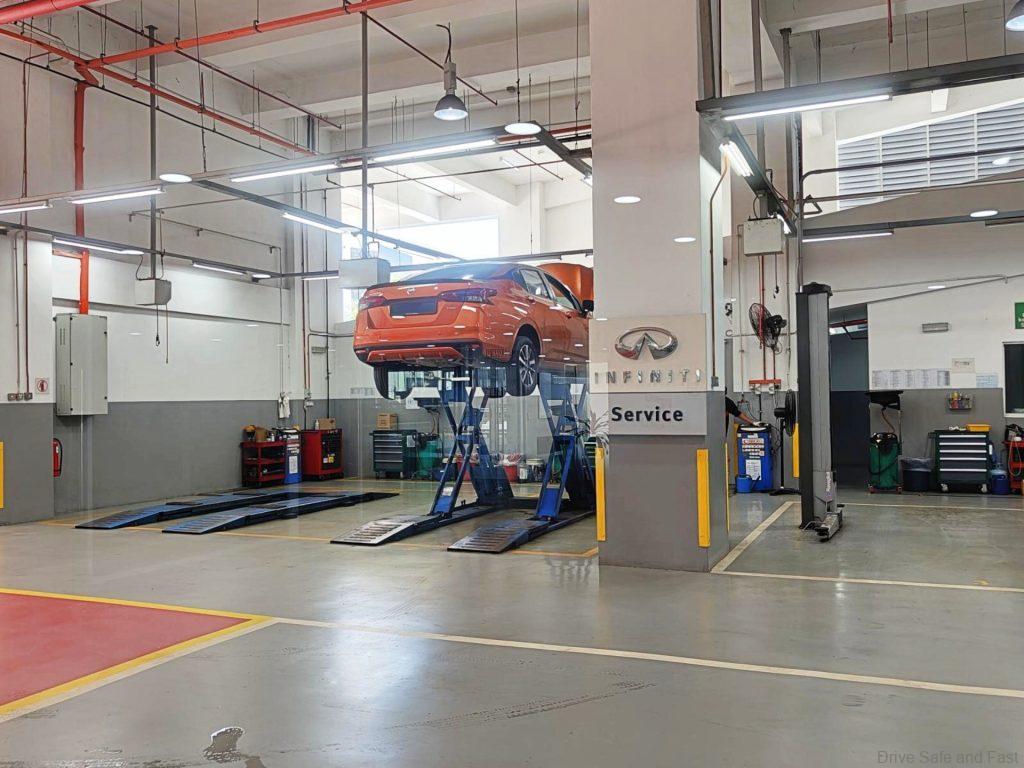
The cost of servicing doesn’t stray too far from the rest of the B-segment competition, and the car comes with alternating free service for the first half-dozen or so. They also throw in a free car wash for every other service. I’ve been using Nissan’s 4S centre in Glenmarie and the service has been fine – there’s plenty of the usual amenities and seating as well as a kids’ play area. Being a less popular brand also means it doesn’t get too crowded, in my experience. I haven’t experienced any issues with the car yet, so only time will tell how that CVT gearbox and the engine mounting will hold up over time.
Wrapping Up: The Nissan Almera and the road ahead
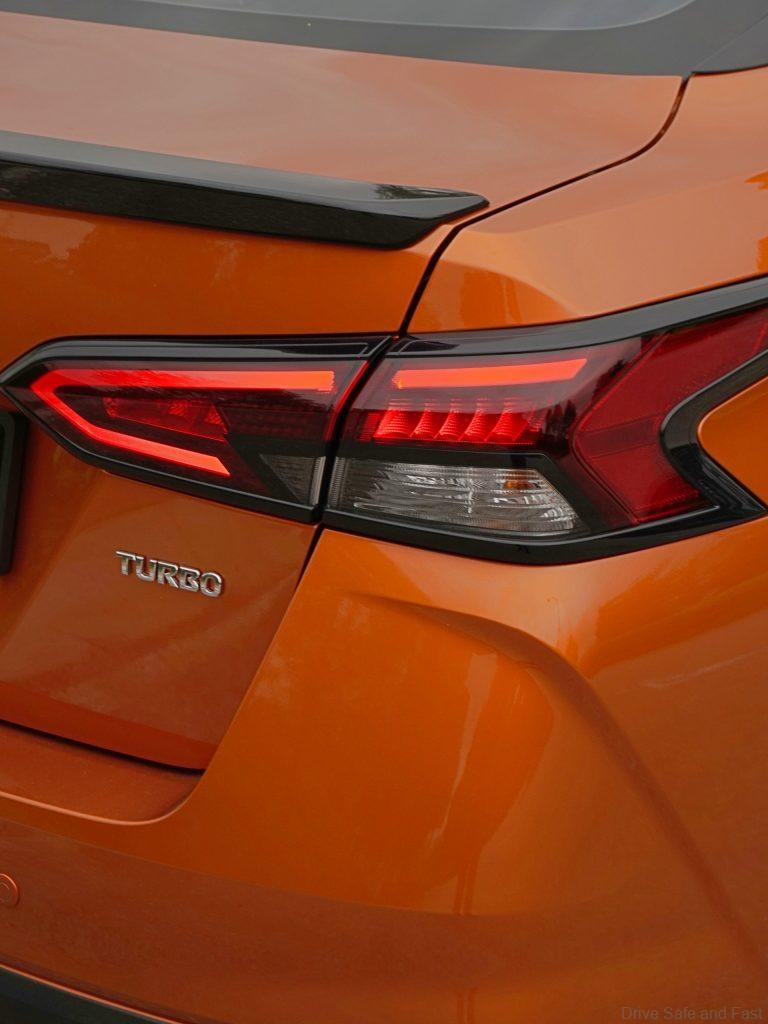
Realistically, the N18-generation Nissan Almera isn’t going to be a car that I’ll own forever, but I think many years down the line, it’ll always have a special place in my heart. It’s clear that Nissan has a very solid product on their hands, while the impressive powertrain combo of a downsized, 1L engine with a turbocharger makes this a far more interesting ride than its immediate competition. Add subjectively keen styling and pack it to the brim with kit and tech and you end up with a very compelling proposition – priced below the psychological threshold of RM100k (and let’s face it, the B-segment has grown in both price and size). Logically, this is a product that should become a standout hit in the competitive B-segment market, but the reality is it’s anything but.
Ask the average layperson on the street about the Nissan Almera and the image that gets conjured is usually the awkward, bulbous proportions of the outdated last-gen N17 Almera. That car occupied a very different position in the market at the time, being an affordable but bare-bones entry point into owning a Japanese marque that was priced well below the competition. Still, it was sold for too long past its shelf life, which also meant that consumers had more time to associate the Almera nameplate with something that was a cheap but ultimately relatively mediocre product as its competitors evolved around it. Consumer sentiment has not been kind to ETCM, either. The Malaysian automotive side of the Internet is rife with all manner of user comments on the company lacking innovation and being very slow to bring anything remotely new to the market, which is further compounded by feedback about poor aftersales service and parts.
Then there’s the 1 litre engine displacement – the market generally has an aversion to small displacement engines without considering the merits of forced induction, especially when the brand itself has already sown the seeds of doubt (you don’t really see the naysayers picking on the turbocharged 1.3L mill back in the Mercedes-Benz A180). Pair that with an odd number of cylinders and the expectation has been set of a vibrating, underpowered mess before even getting behind the wheel. These are probably the same people who erroneously use litres and cubic capacity interchangeably, but let’s not go there.
I won’t deny that the relative rarity of the current-generation Almera adds to its charm and presence on the streets, especially given the number of people who have no clue what this orange machine is without seeing the logo or the badges. However, this doesn’t bode well for Nissan and puts ETCM in a bit of a double jeopardy type of situation – poor sales likely means less of a marketing budget to spur already low sales numbers. It’s a tough fight when competing cars from Honda and Toyota – solid products in their own right – have the massive weight of their brand salience backing them. Look up B-segment shootouts online or even forum discussions on cars in the segment and you’ll notice conversations usually revolve around the City or Vios, with the Almera either usually forgotten and left by the wayside, or becoming the subject of criticism for presumed issues by way of association with ETCM’s history from people who’ve never laid hands on the N18 generation – in no small part due to its relative rarity. This is, after all, a market where Nissan is outsold by premium German marques.
As much as I’d like to see it succeed, if nothing changes then the Nissan Almera is likely to go the way of the last 2 generations of the Kia Picanto in our market – an excellently packaged product that did (mostly) all the right things, but could not sell in enough volume against fierce competition to justify its existence in the product portfolio, eventually getting discontinued and fading into obscurity.

